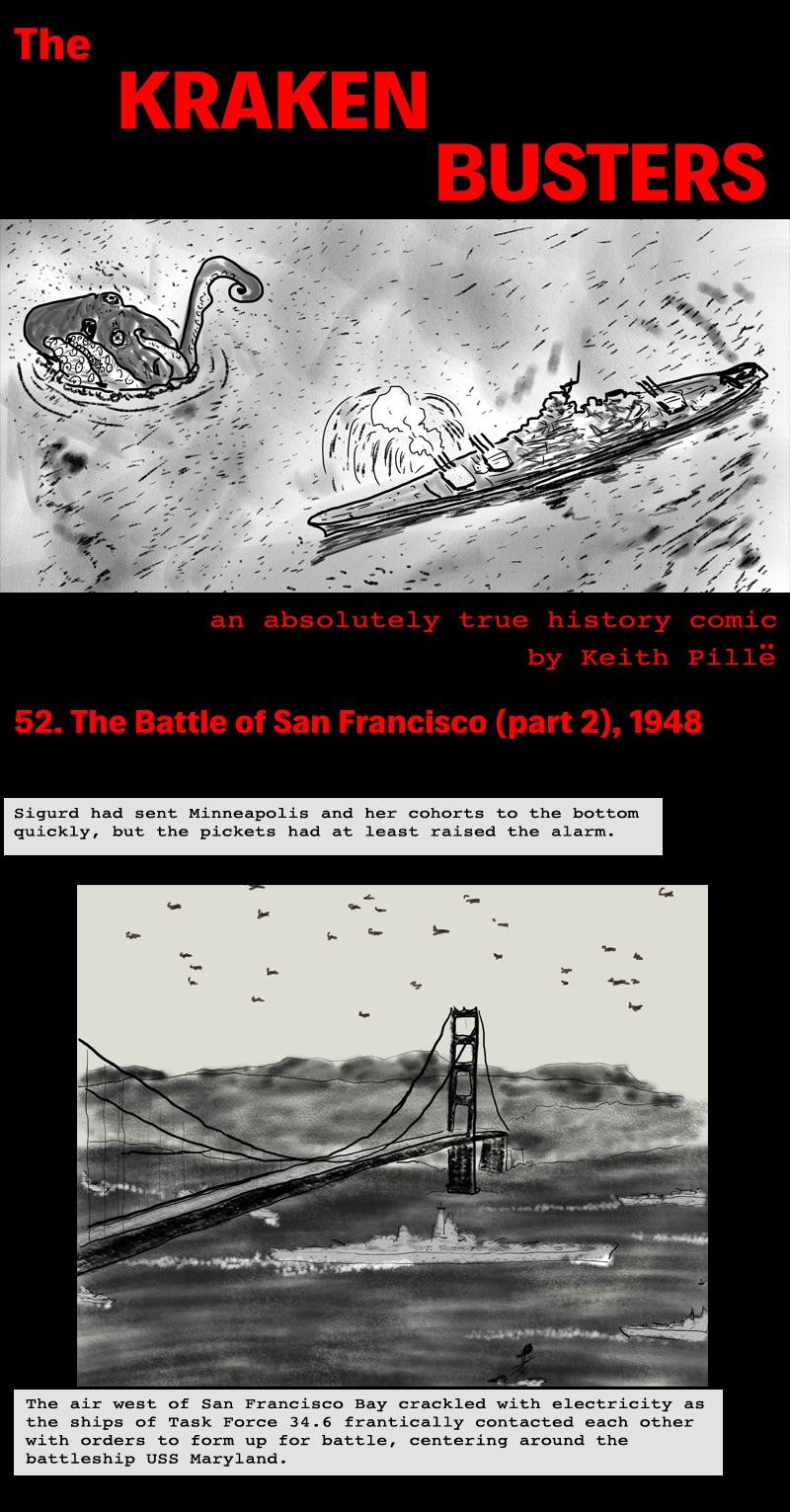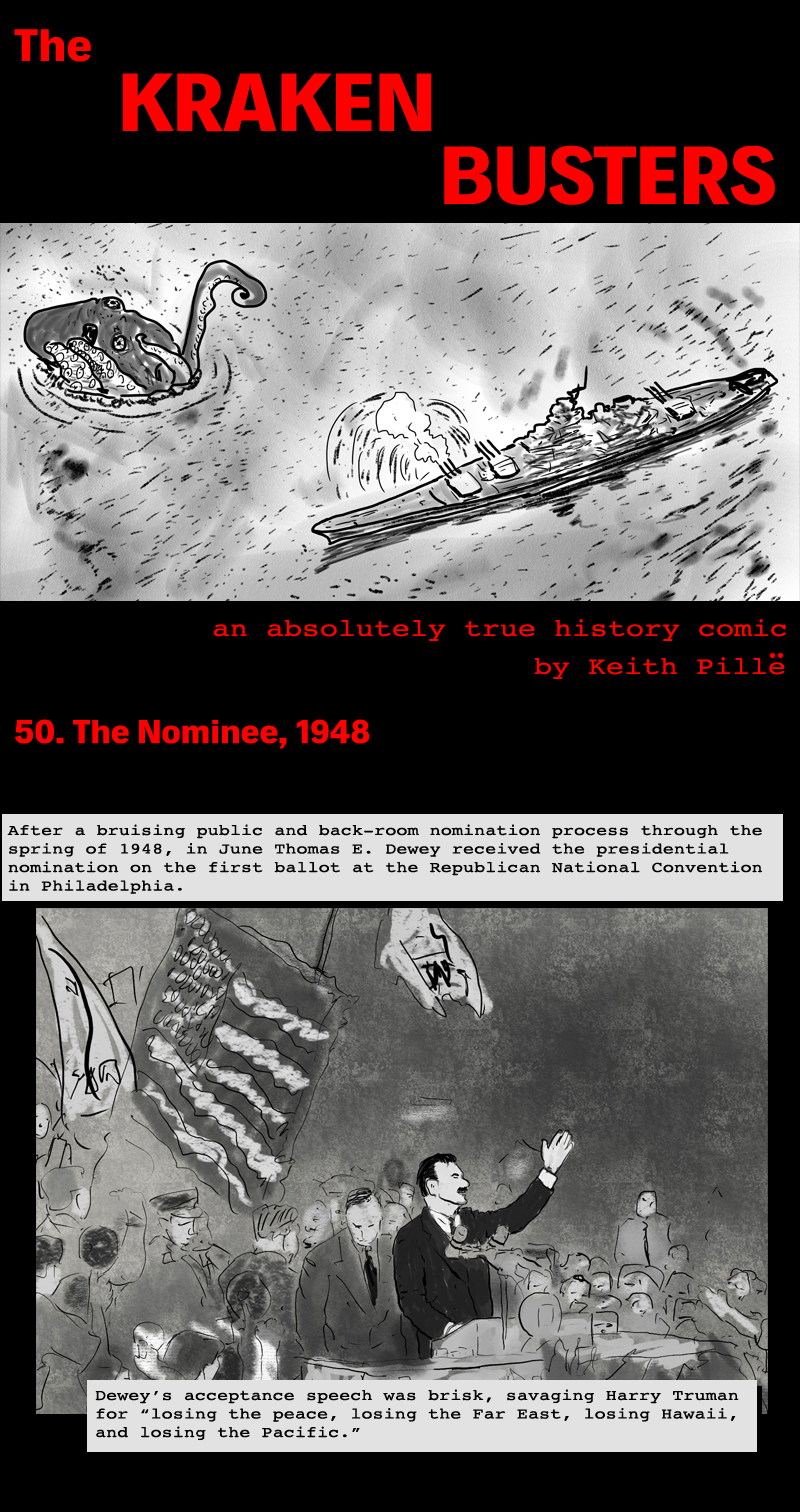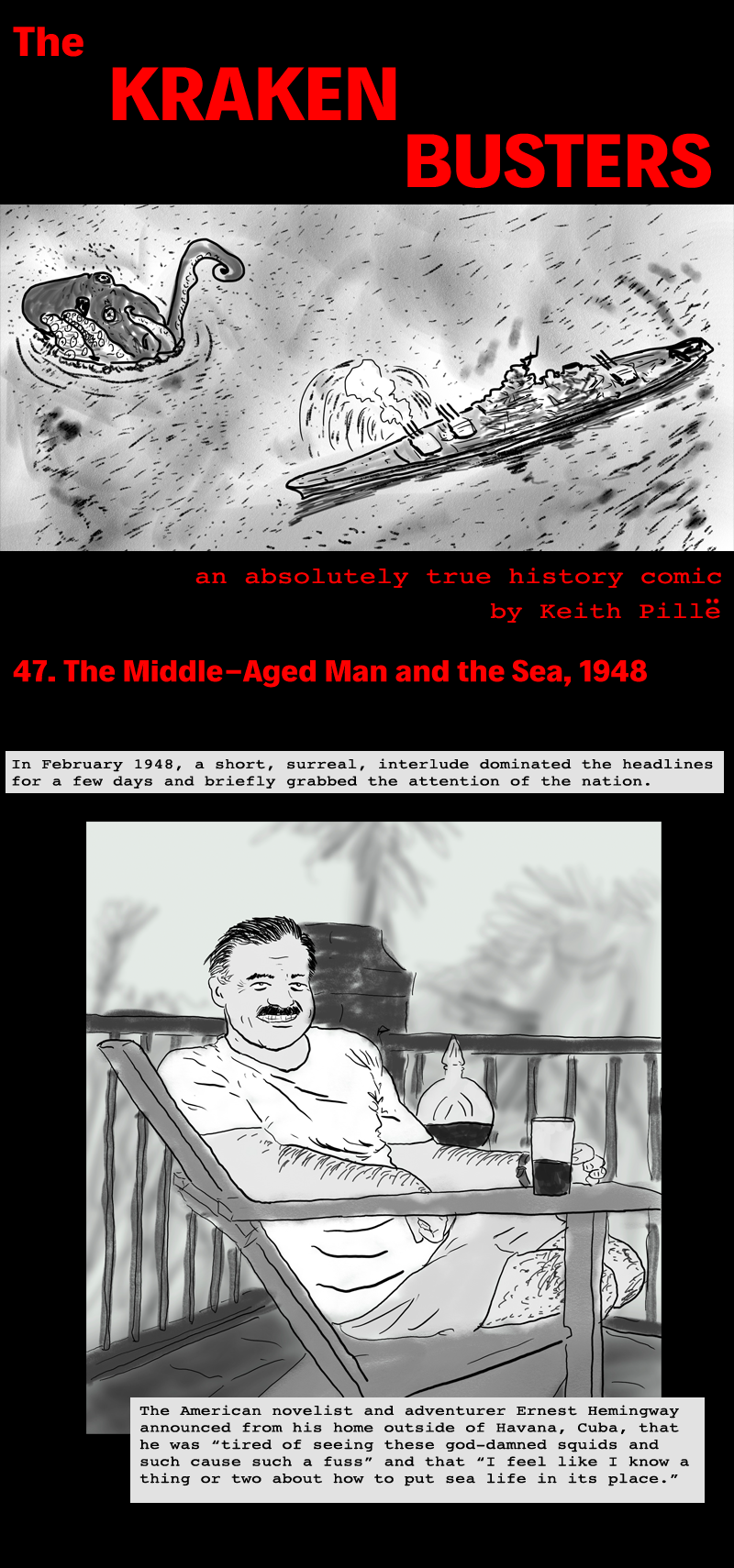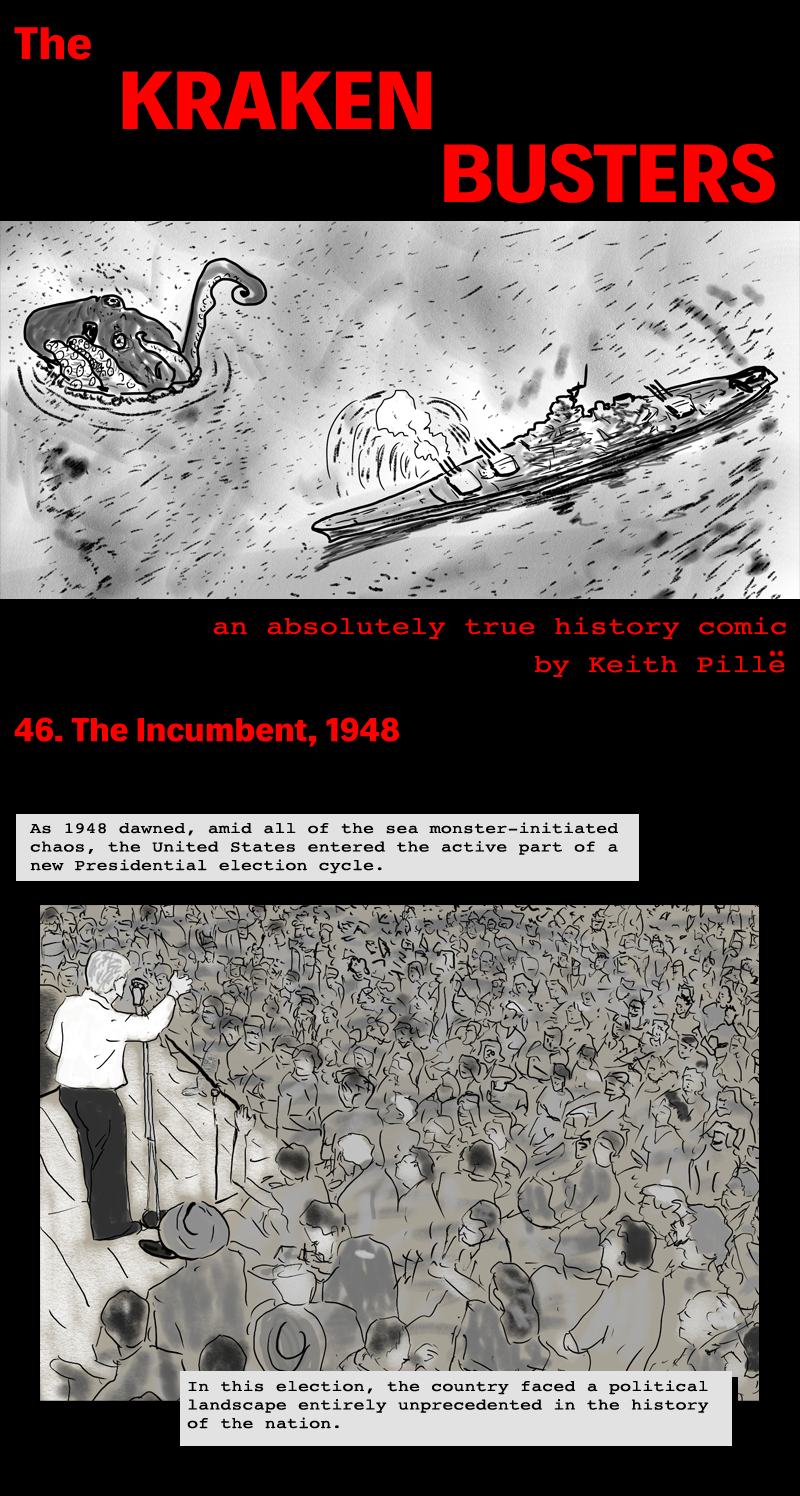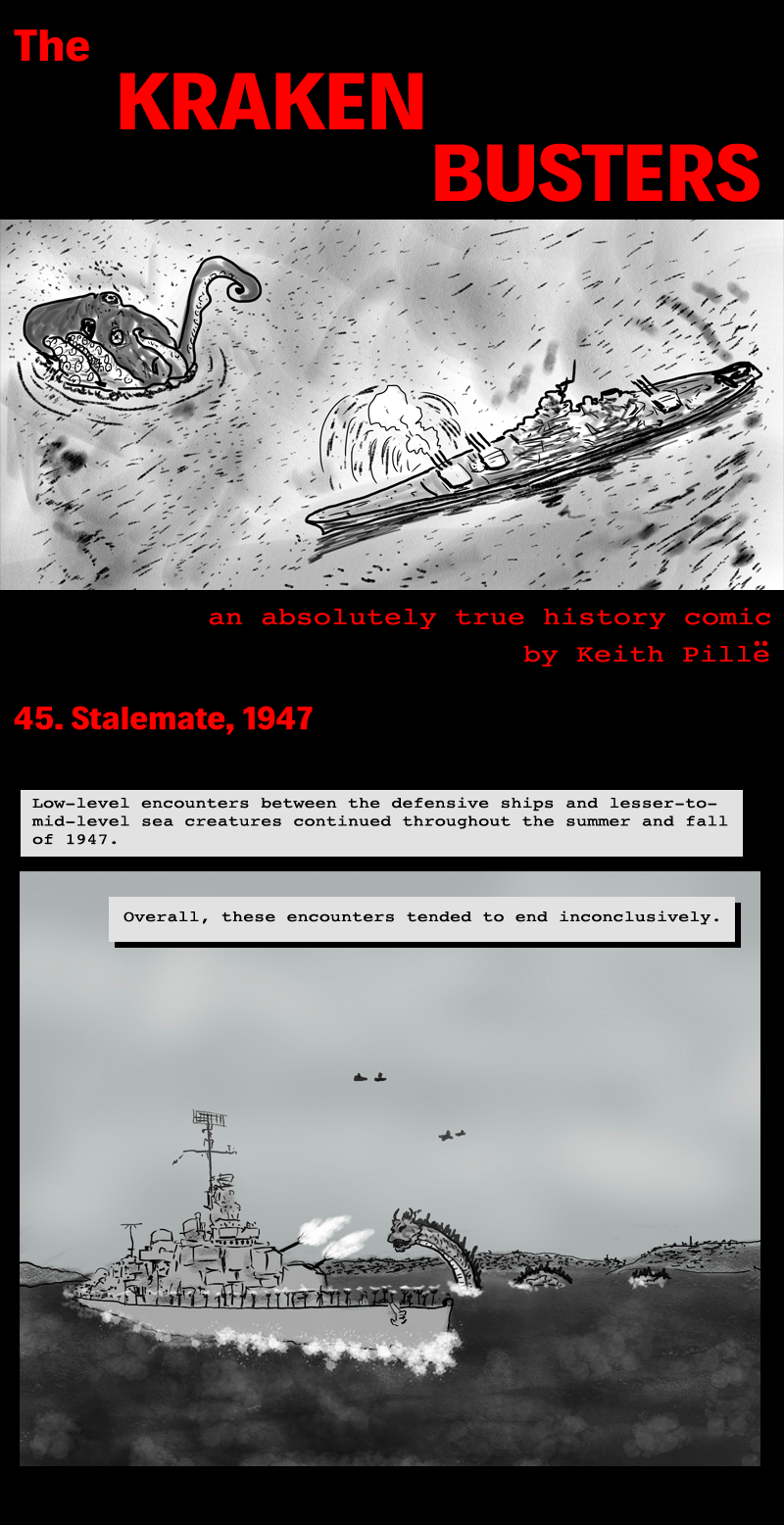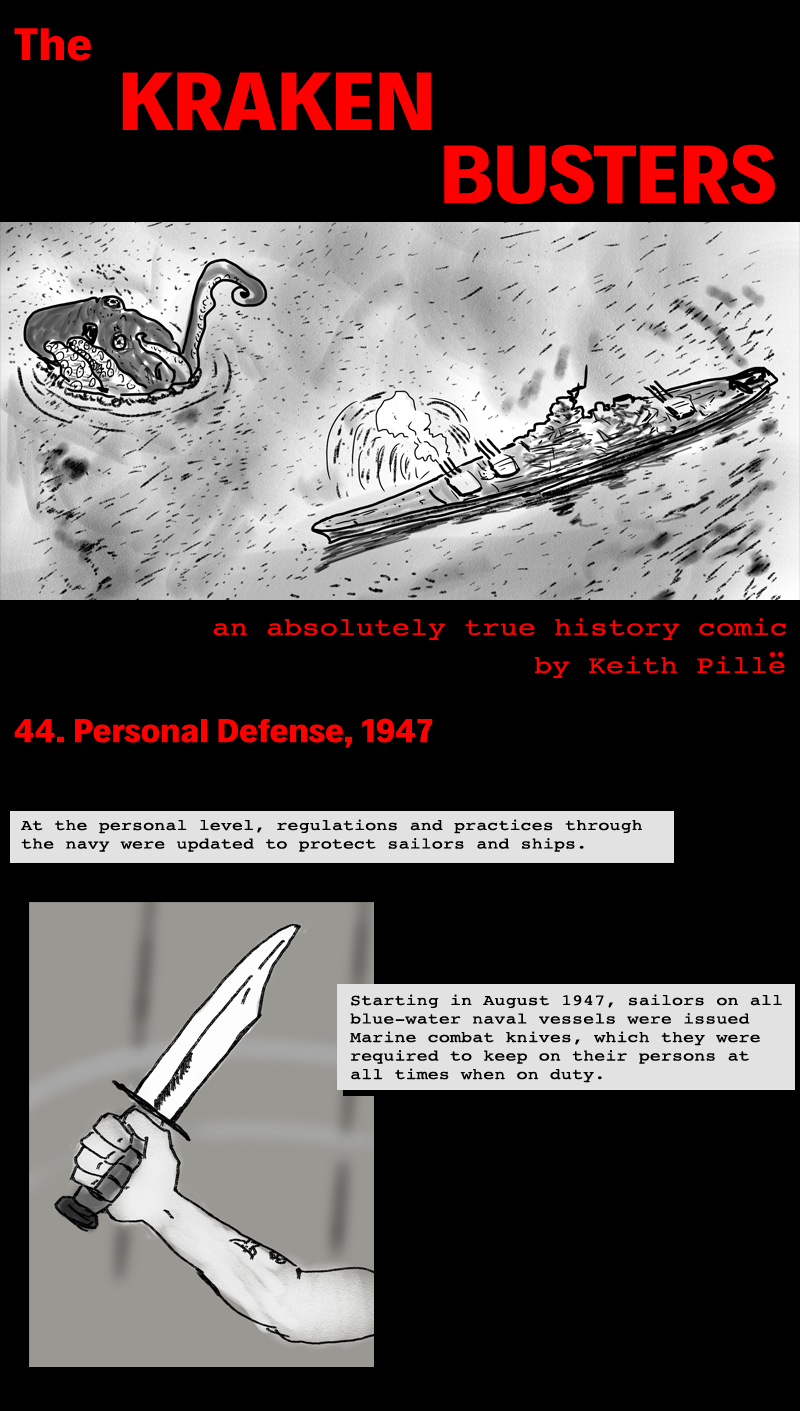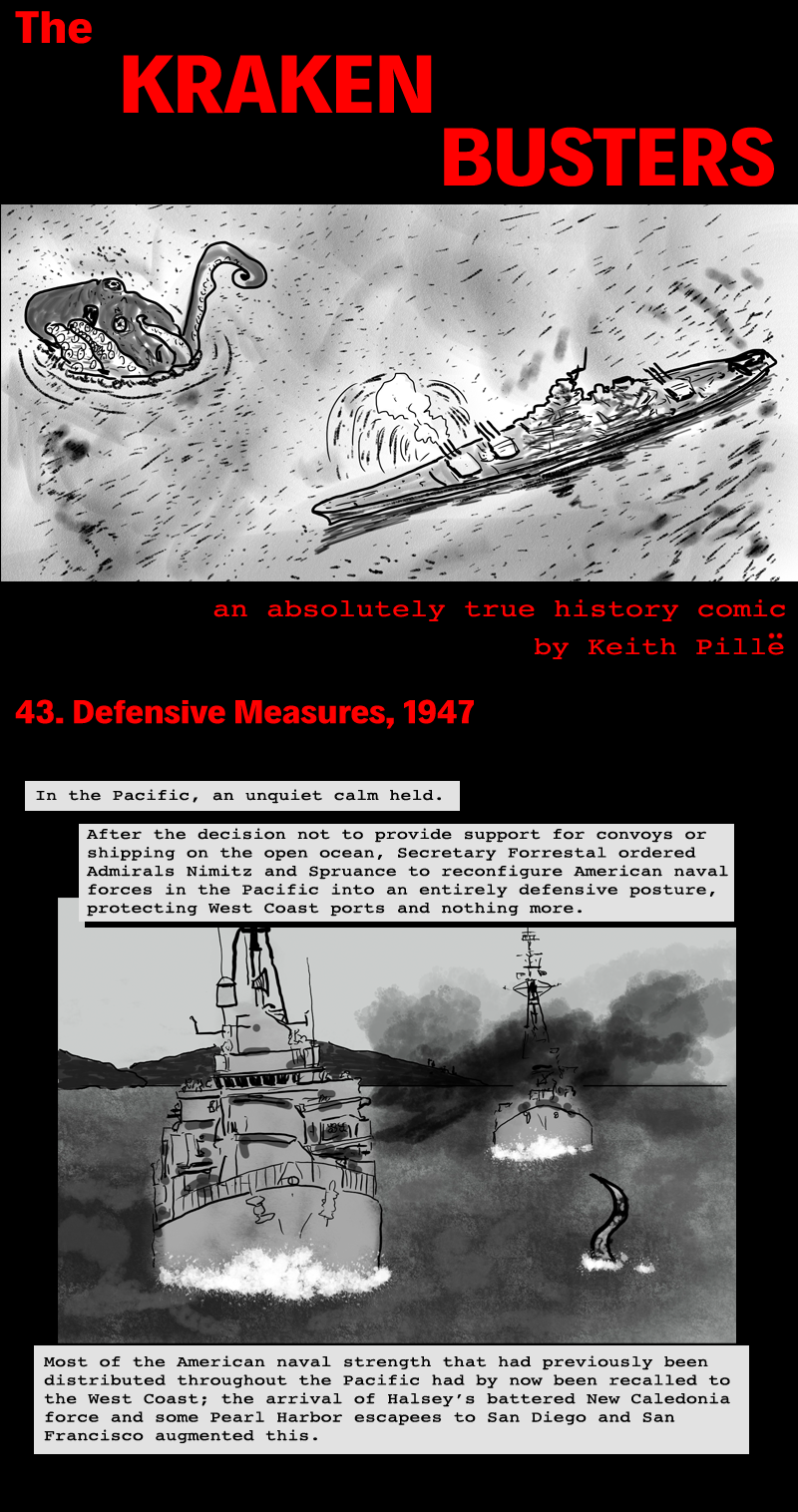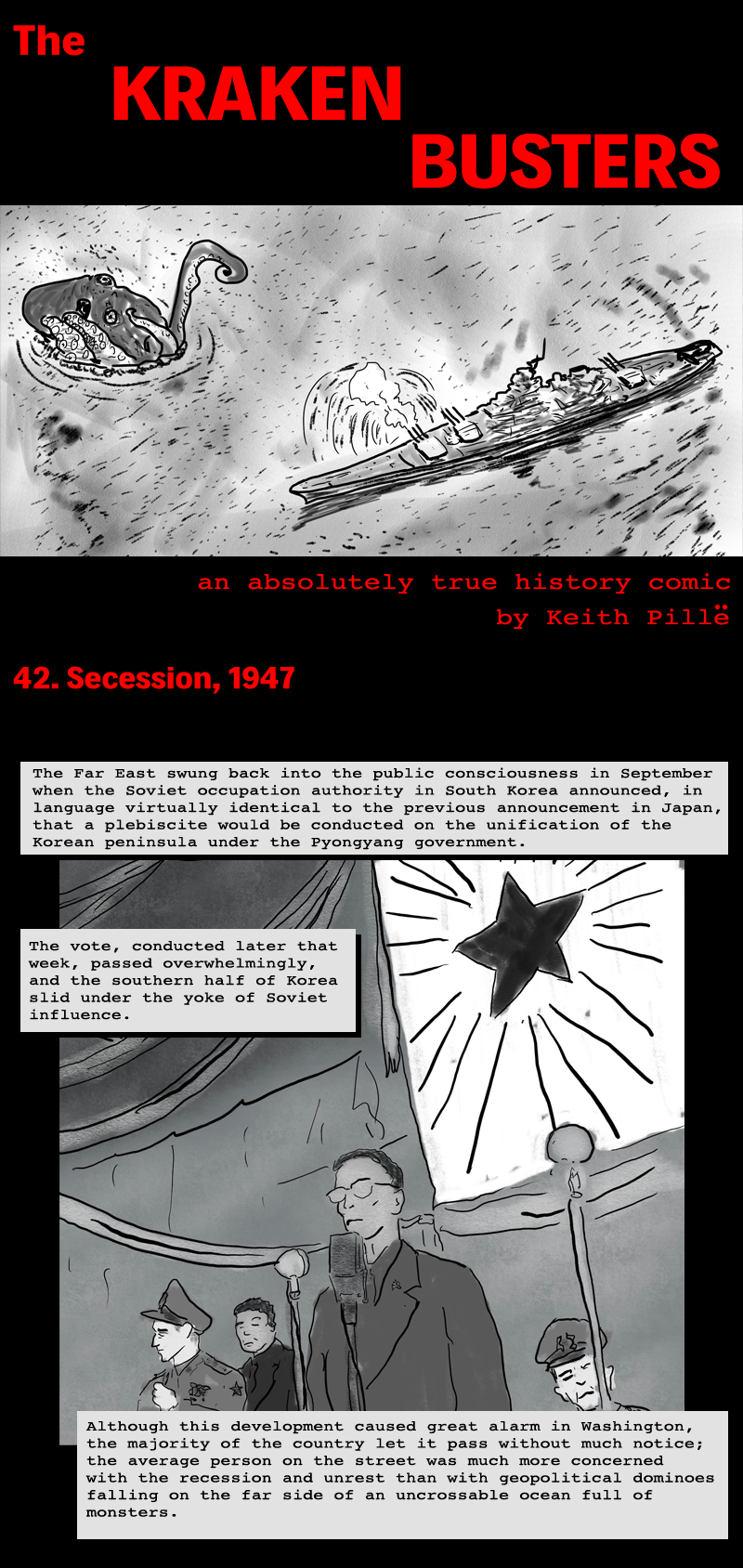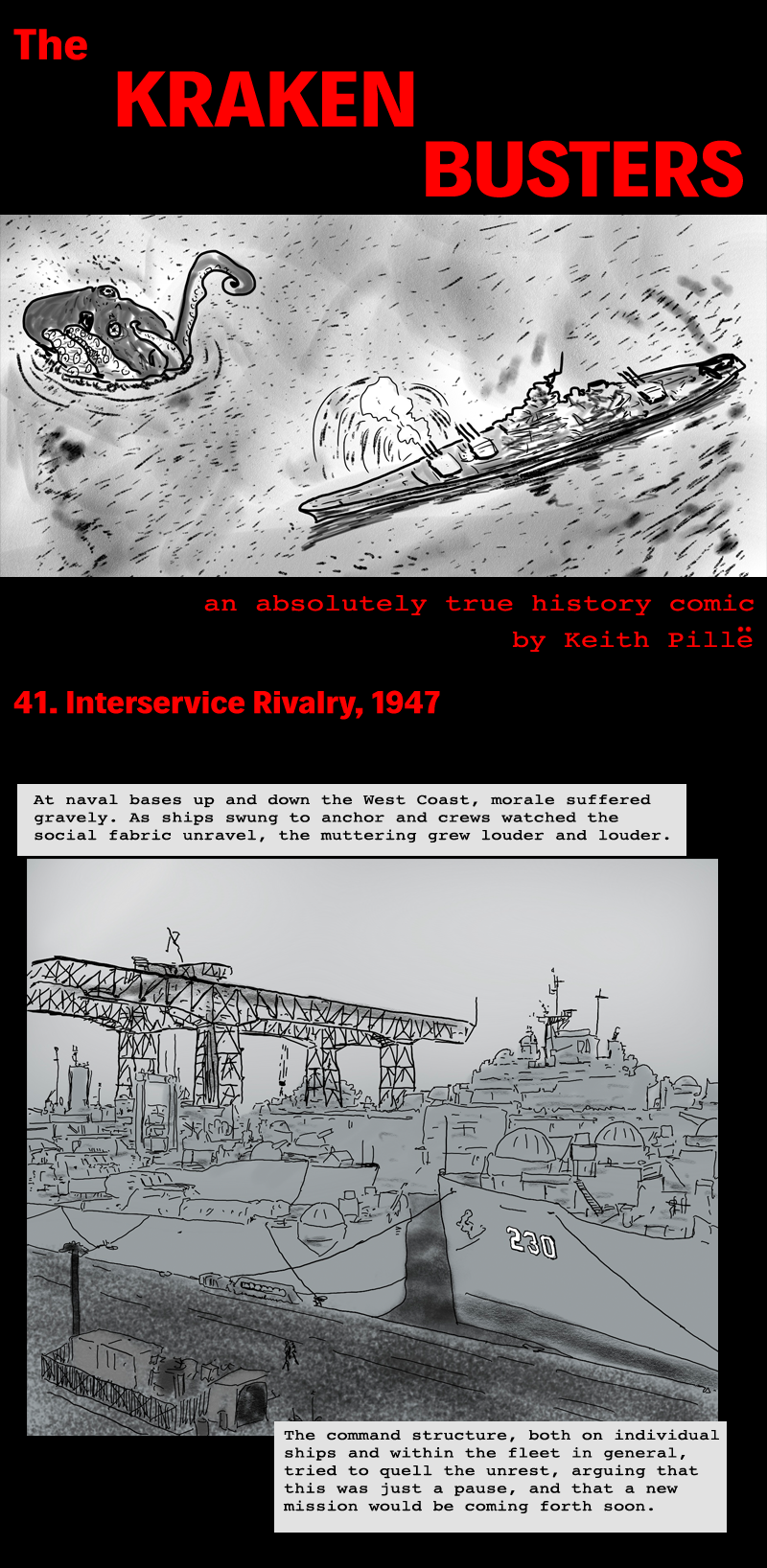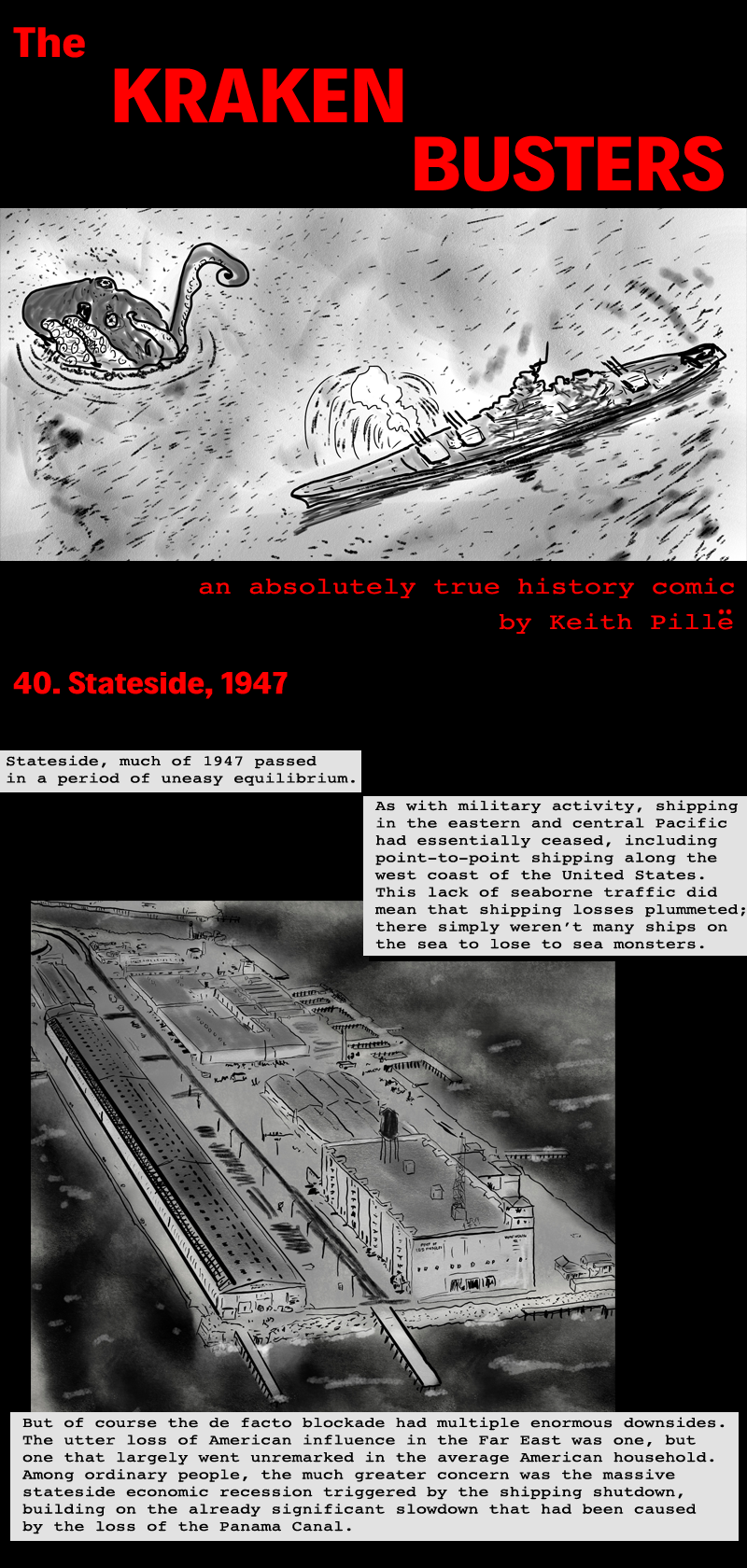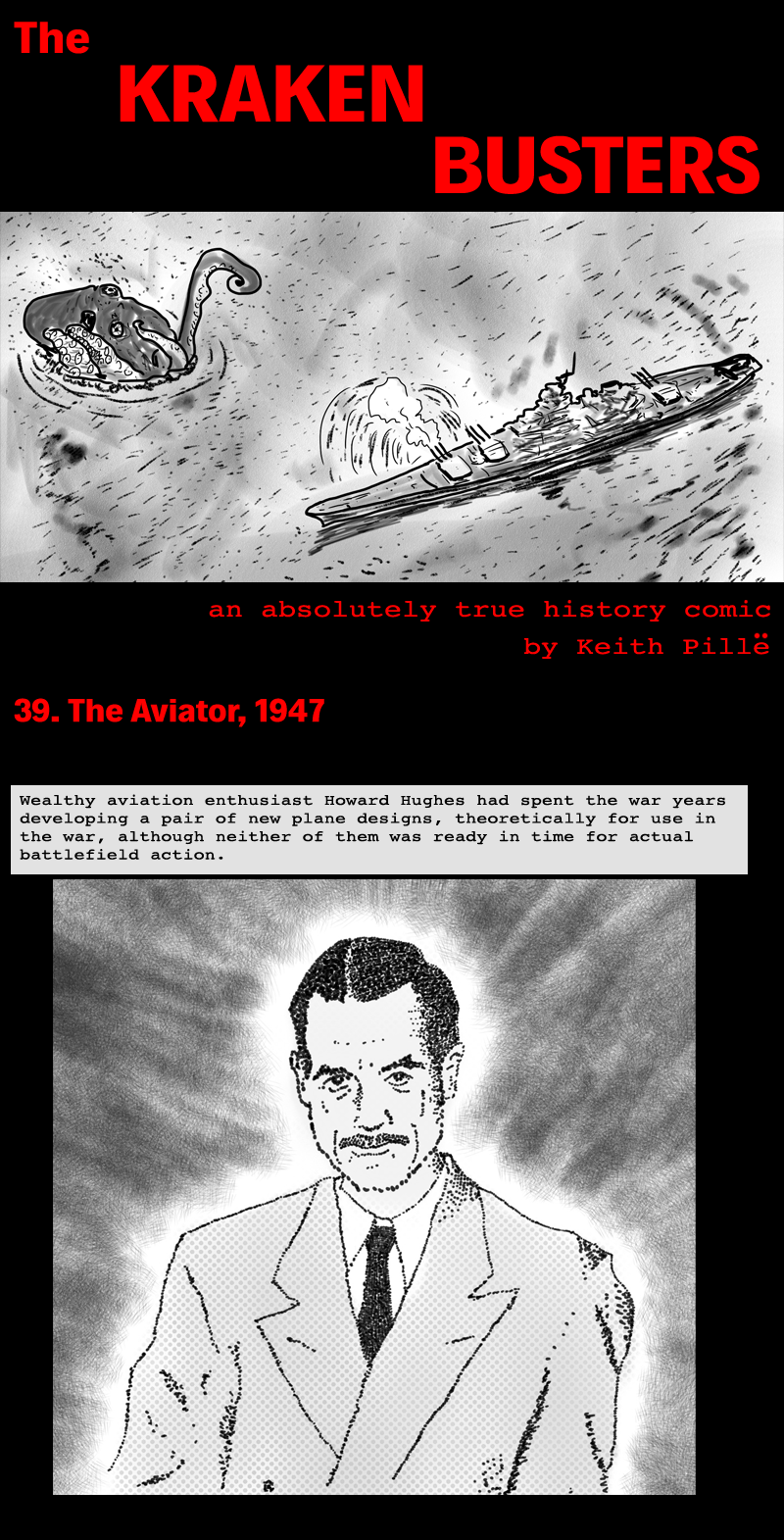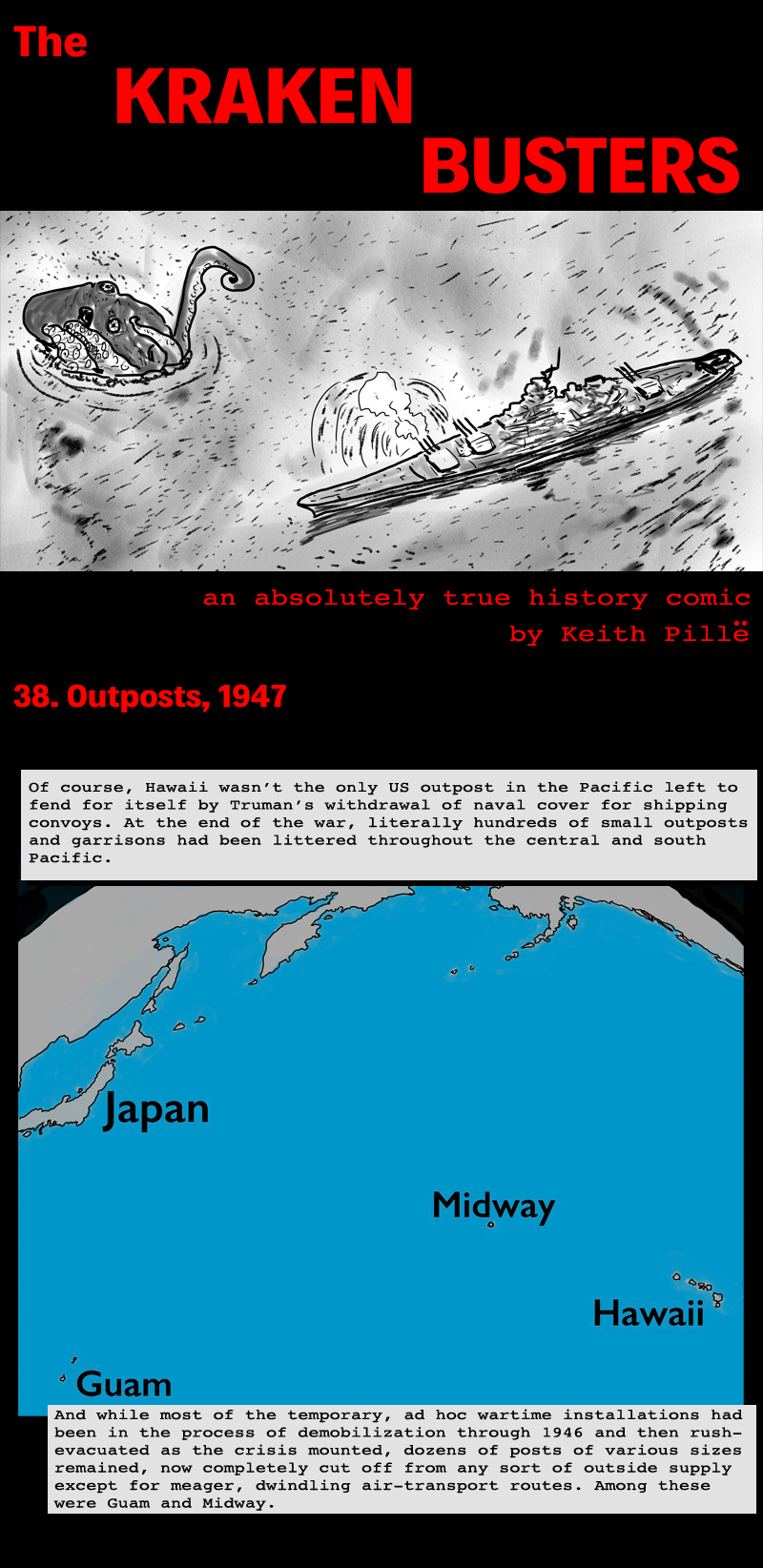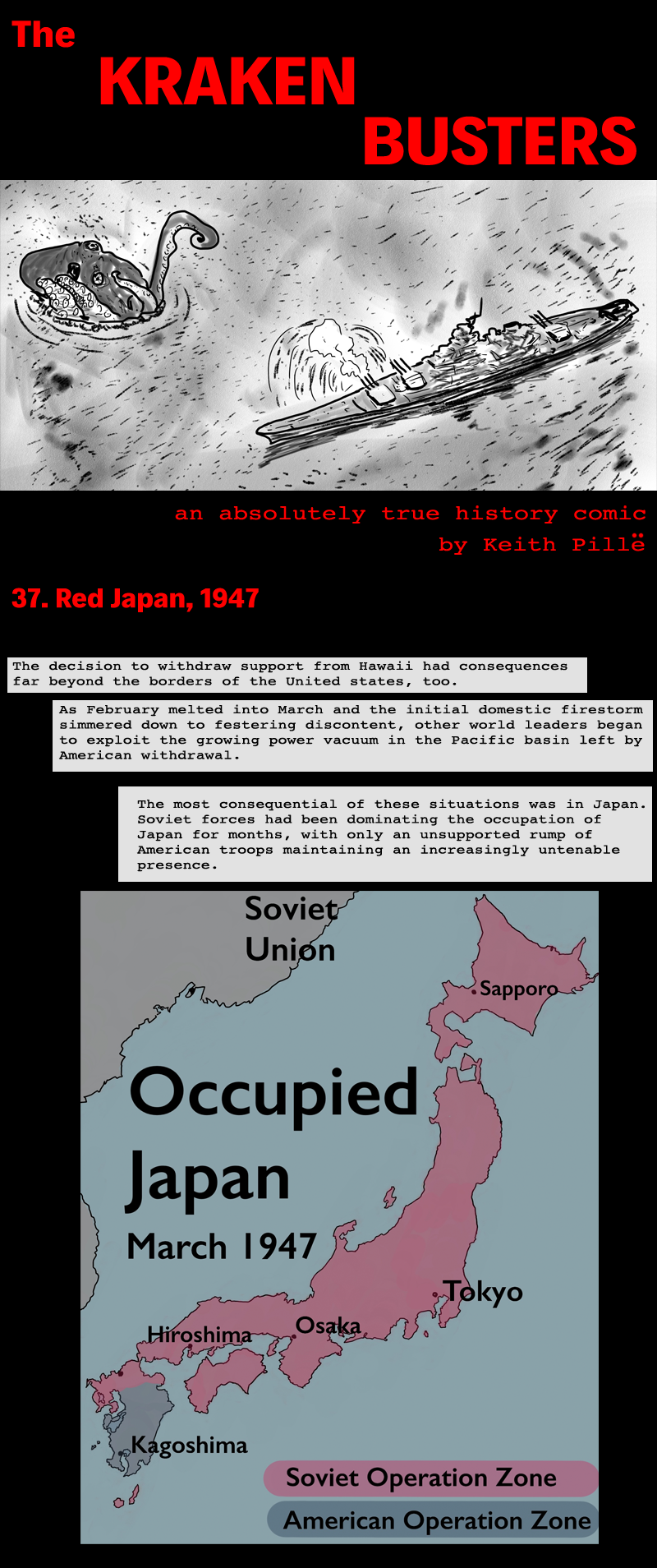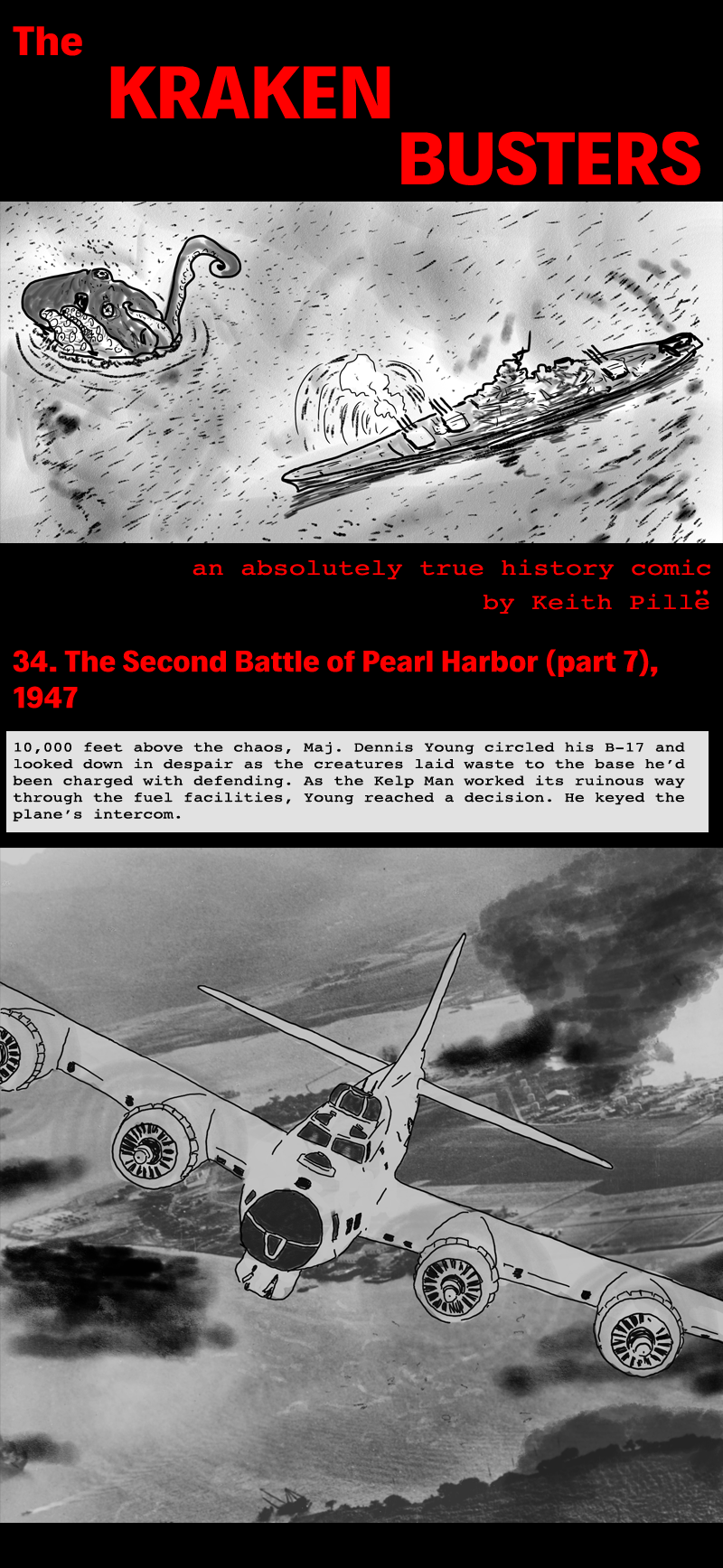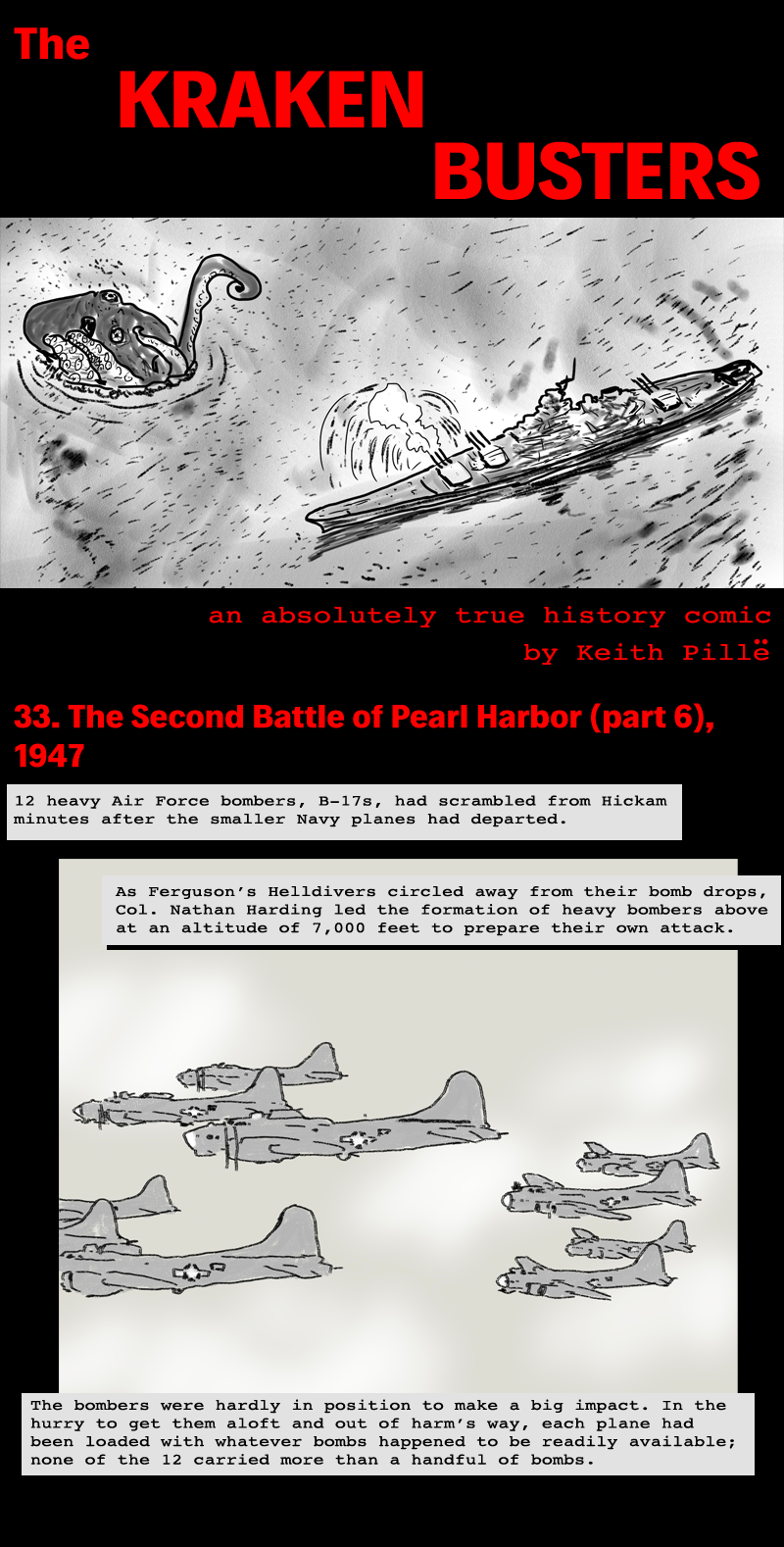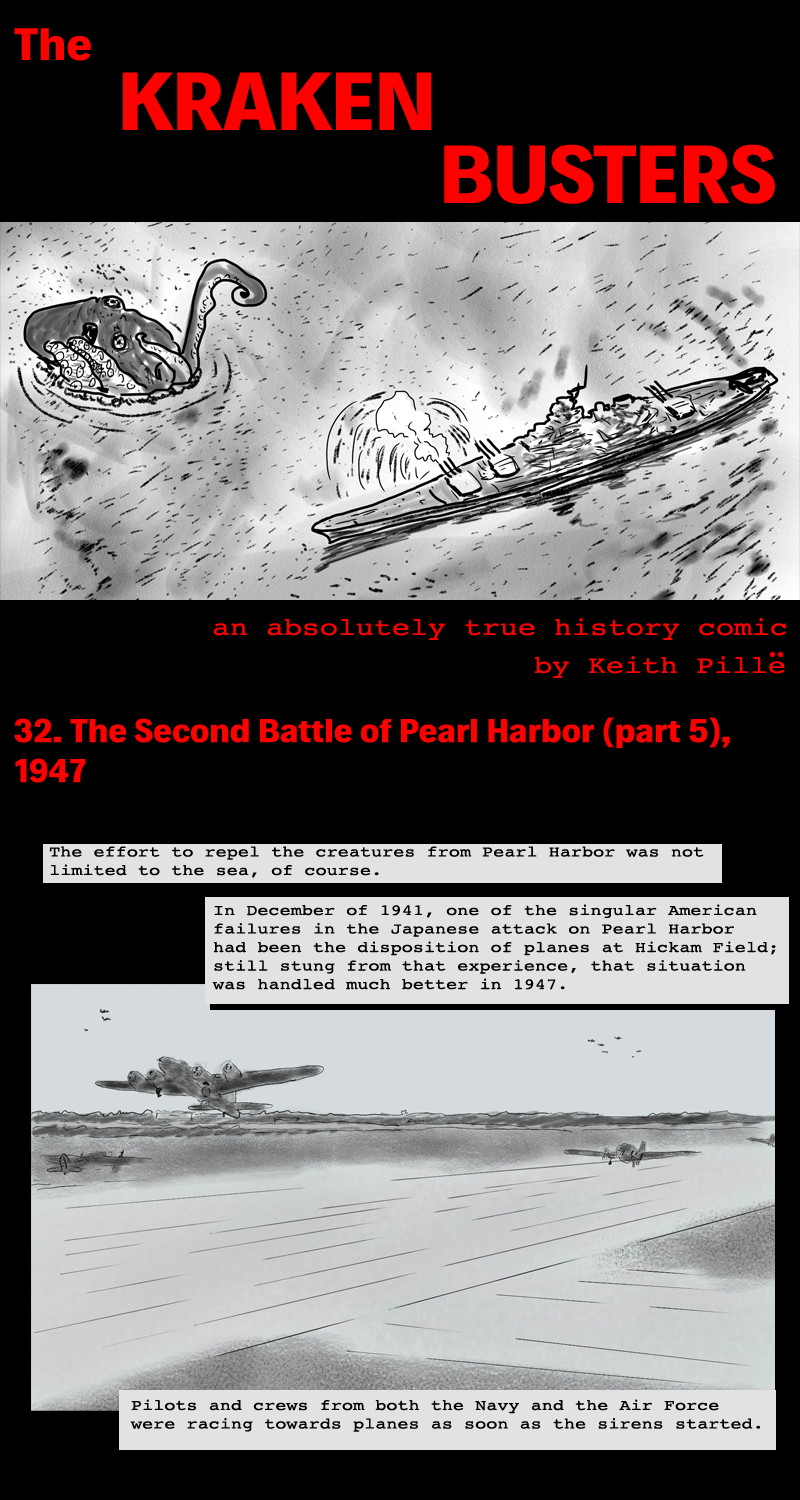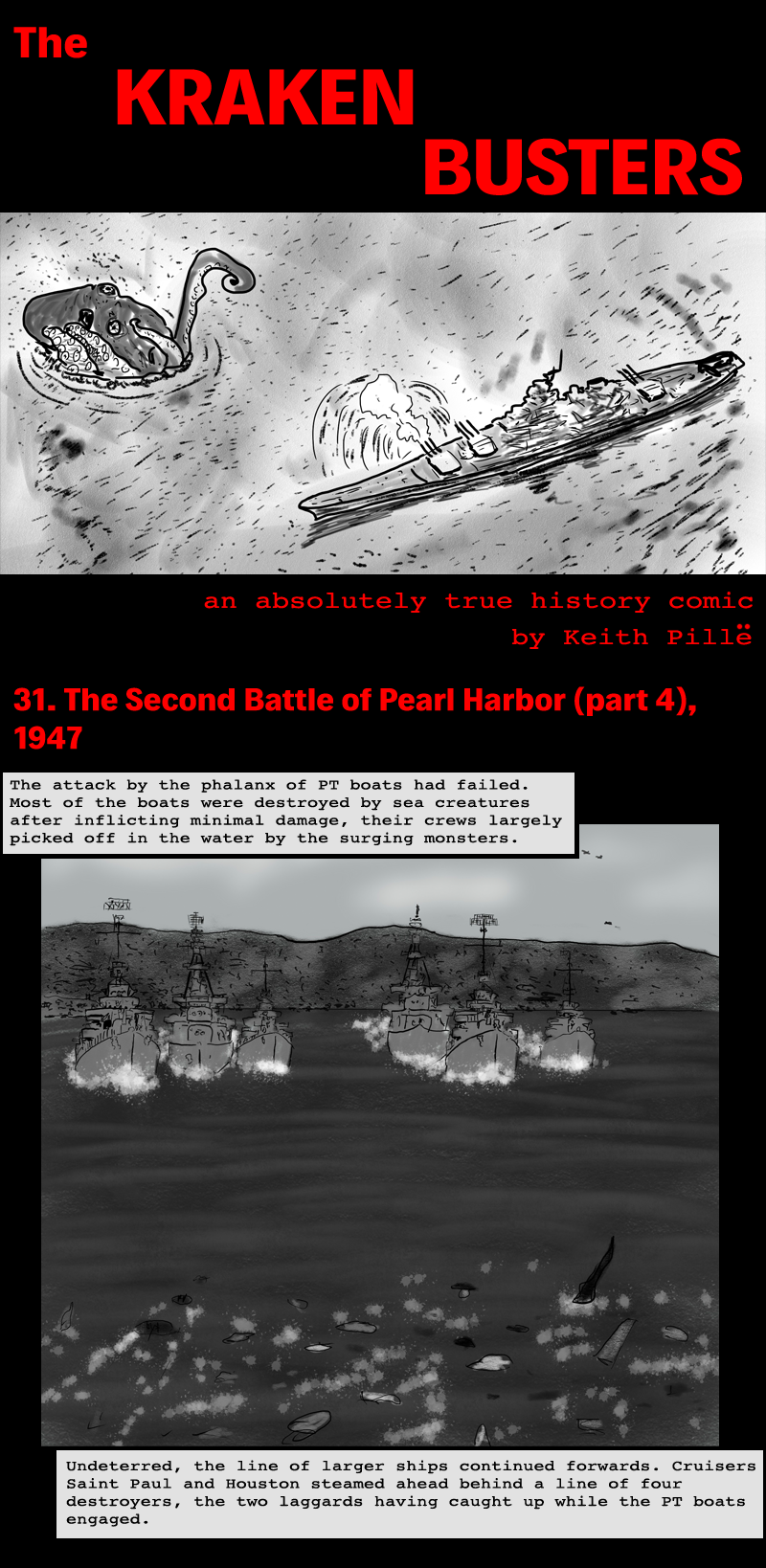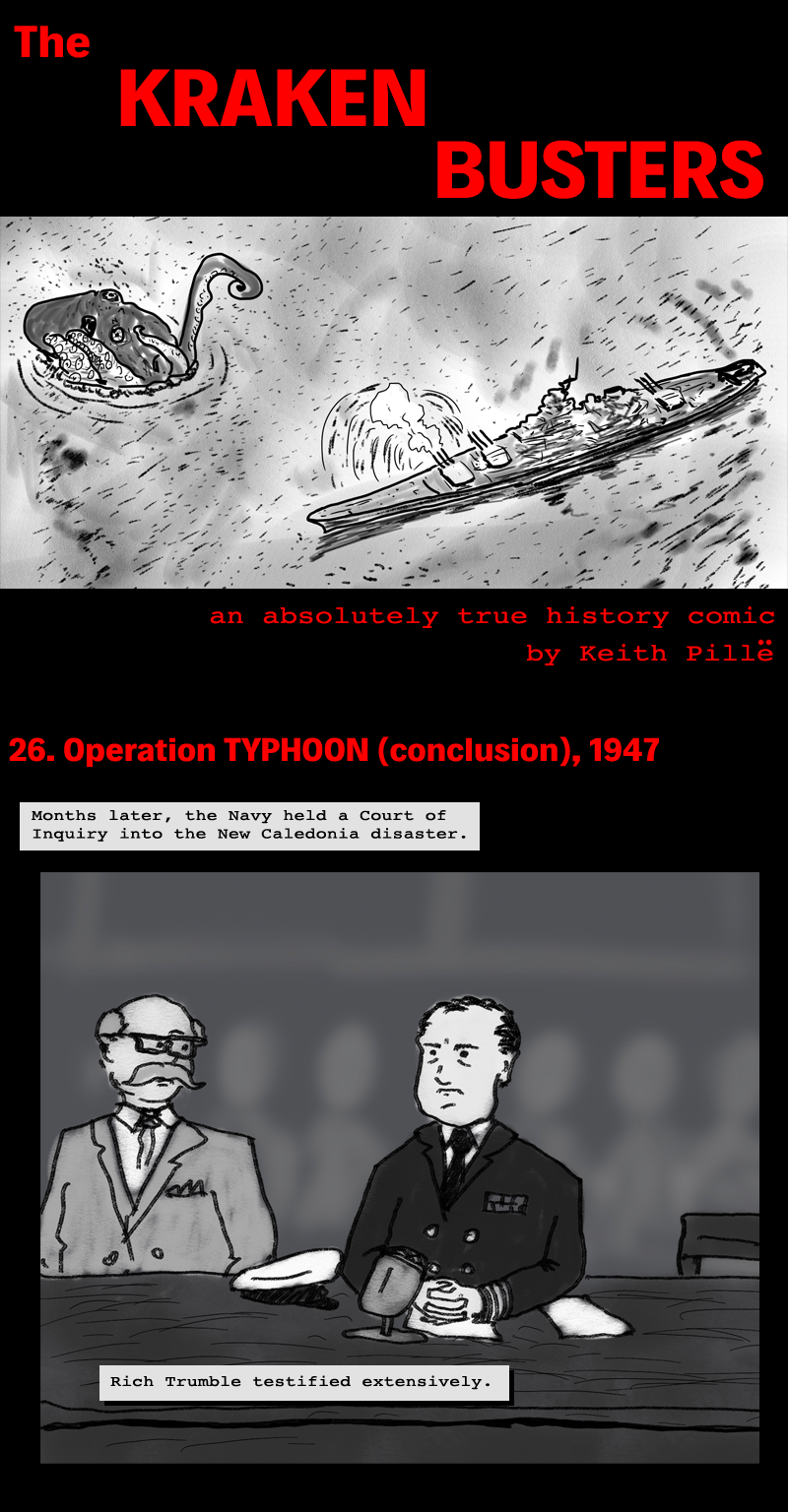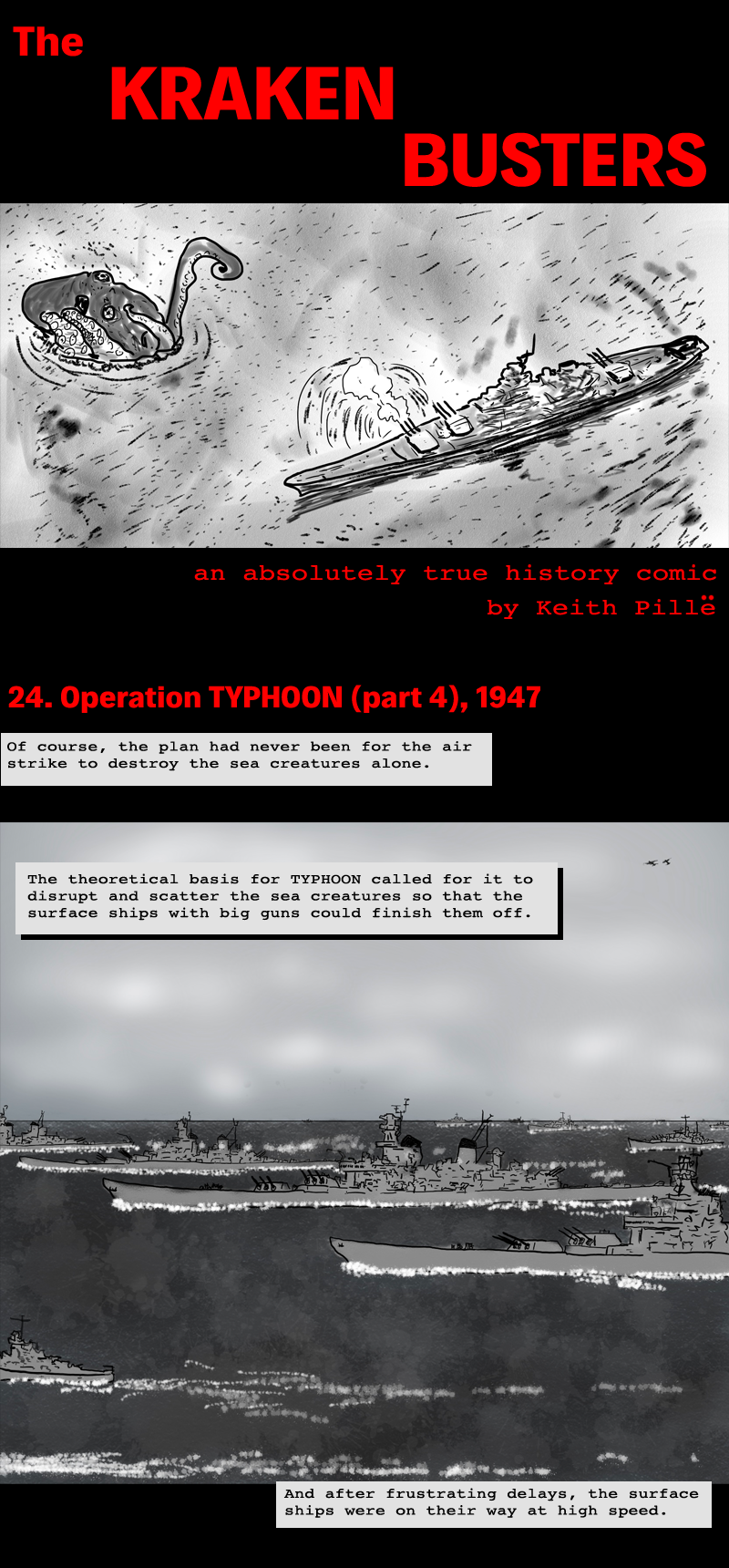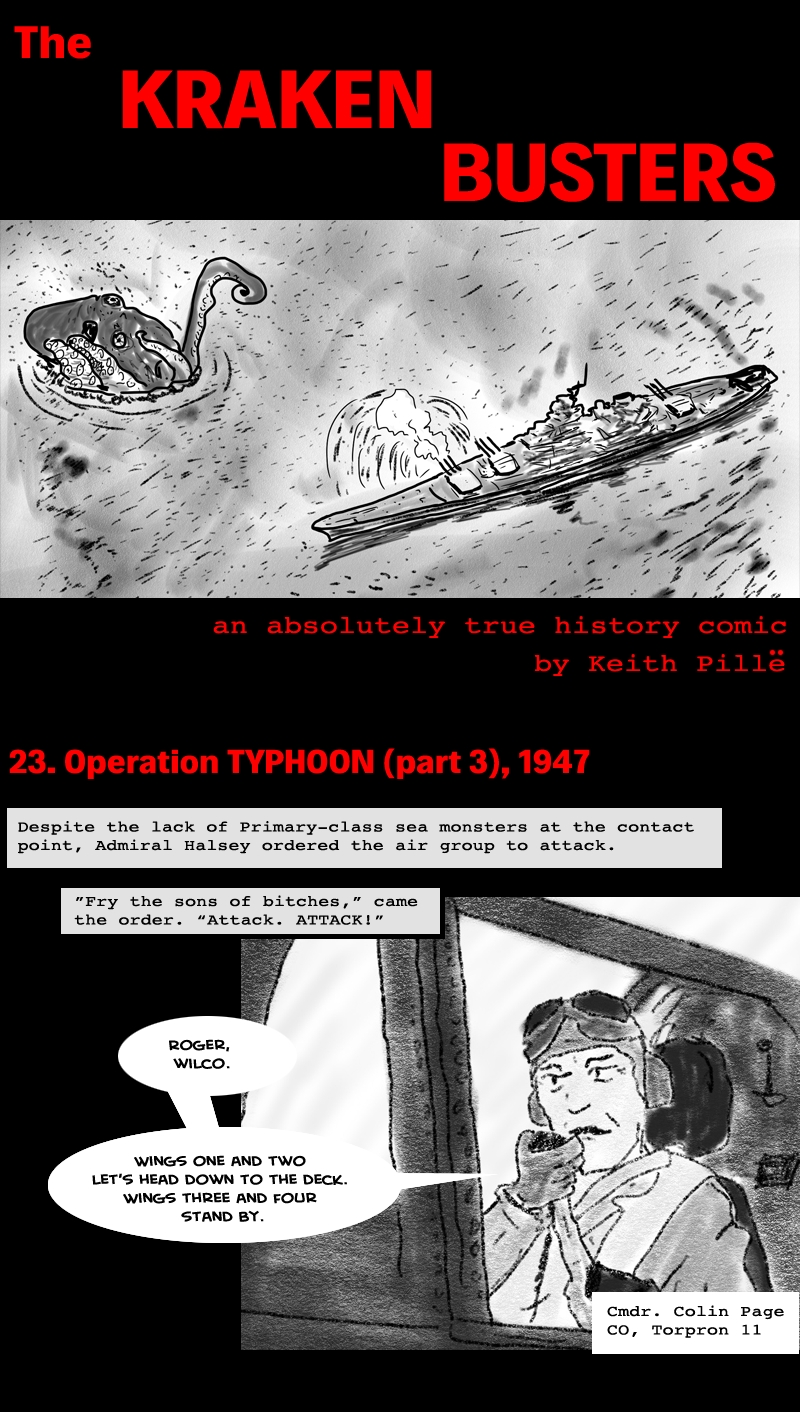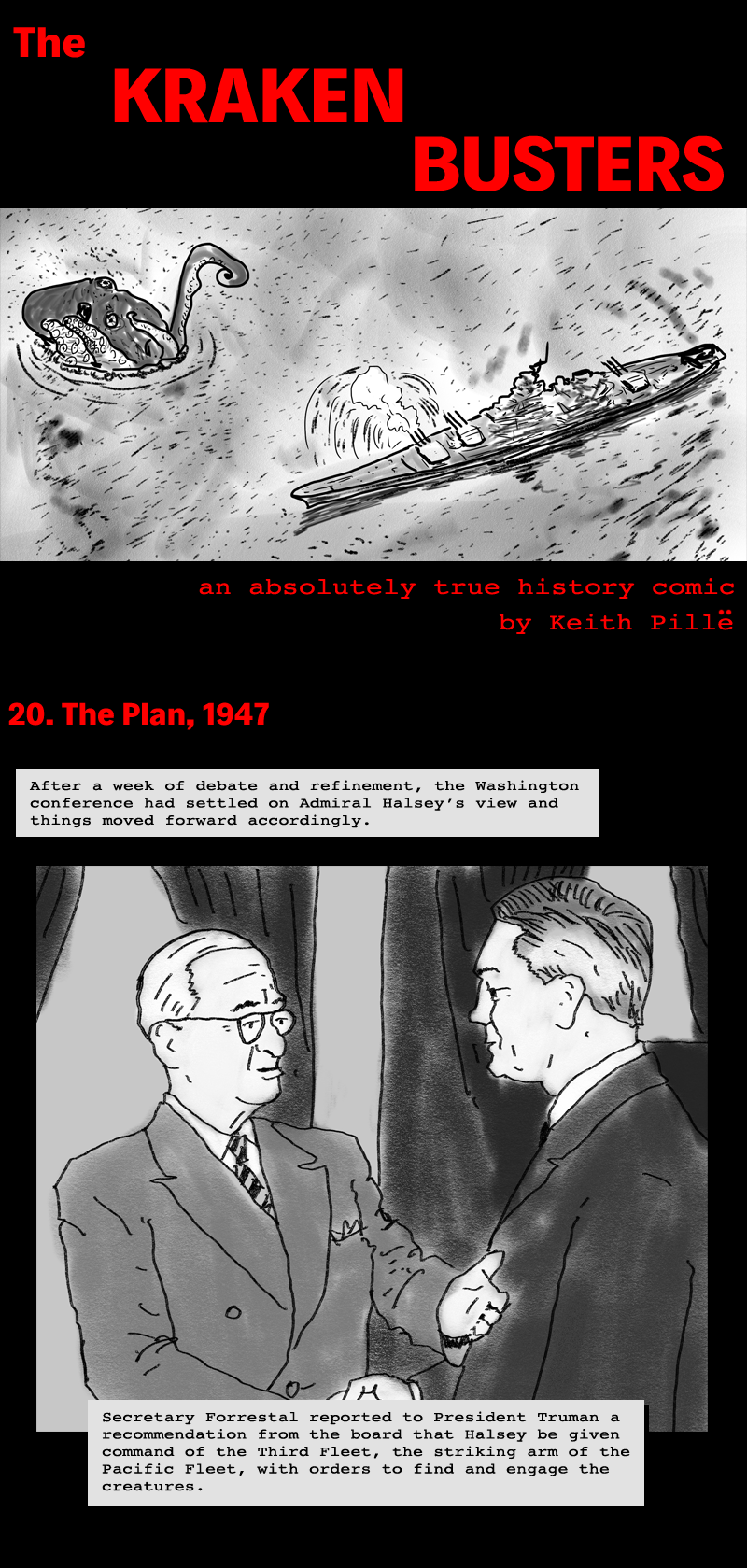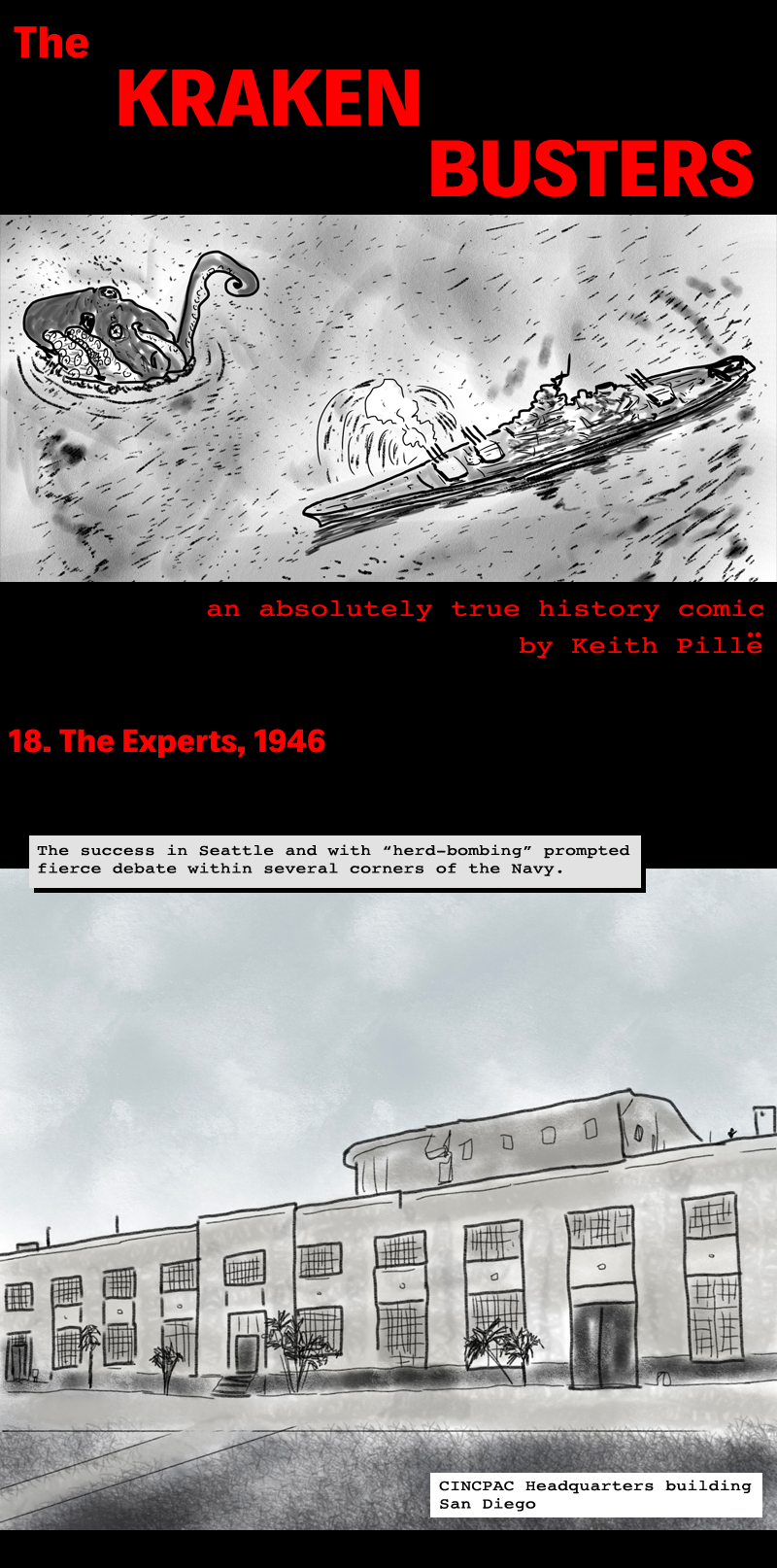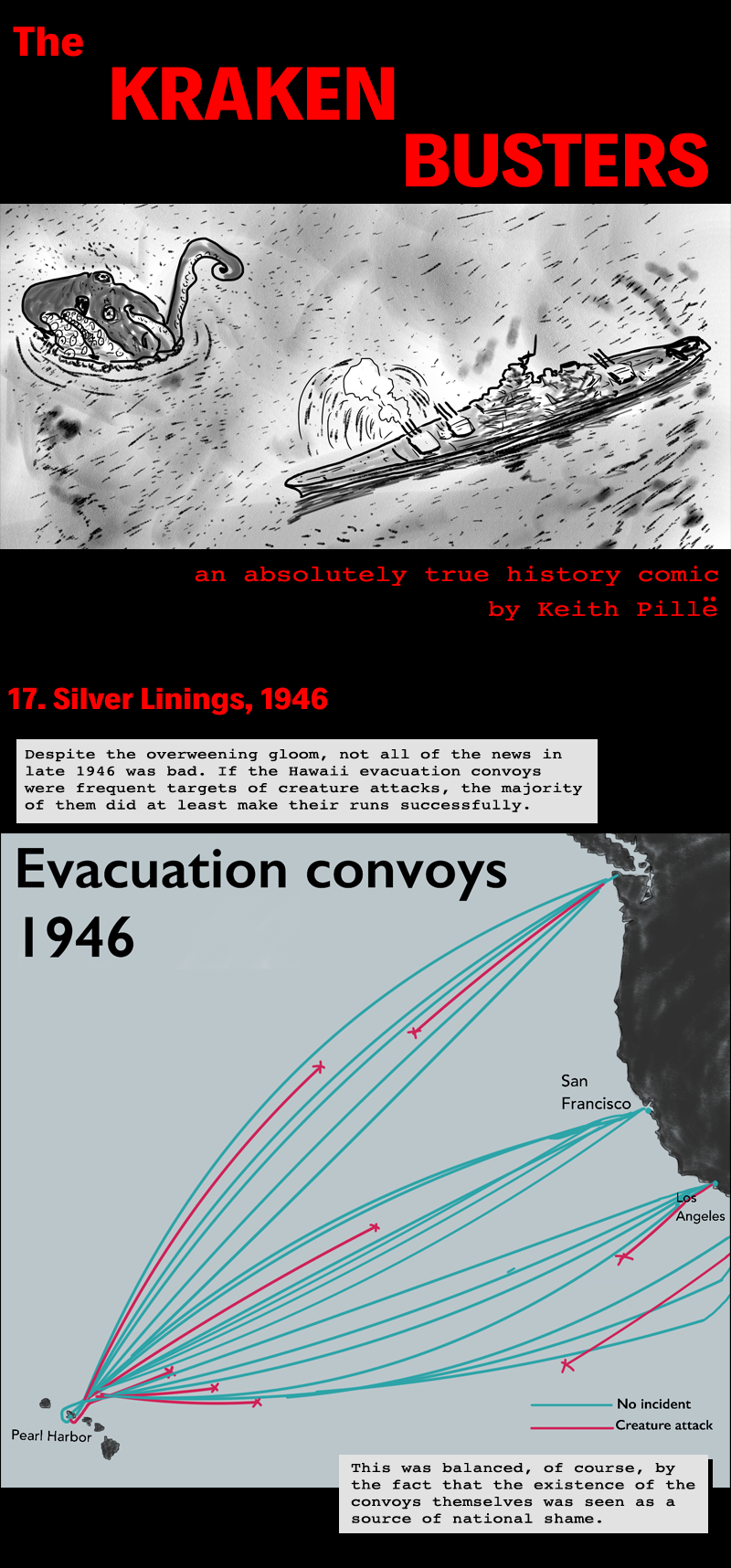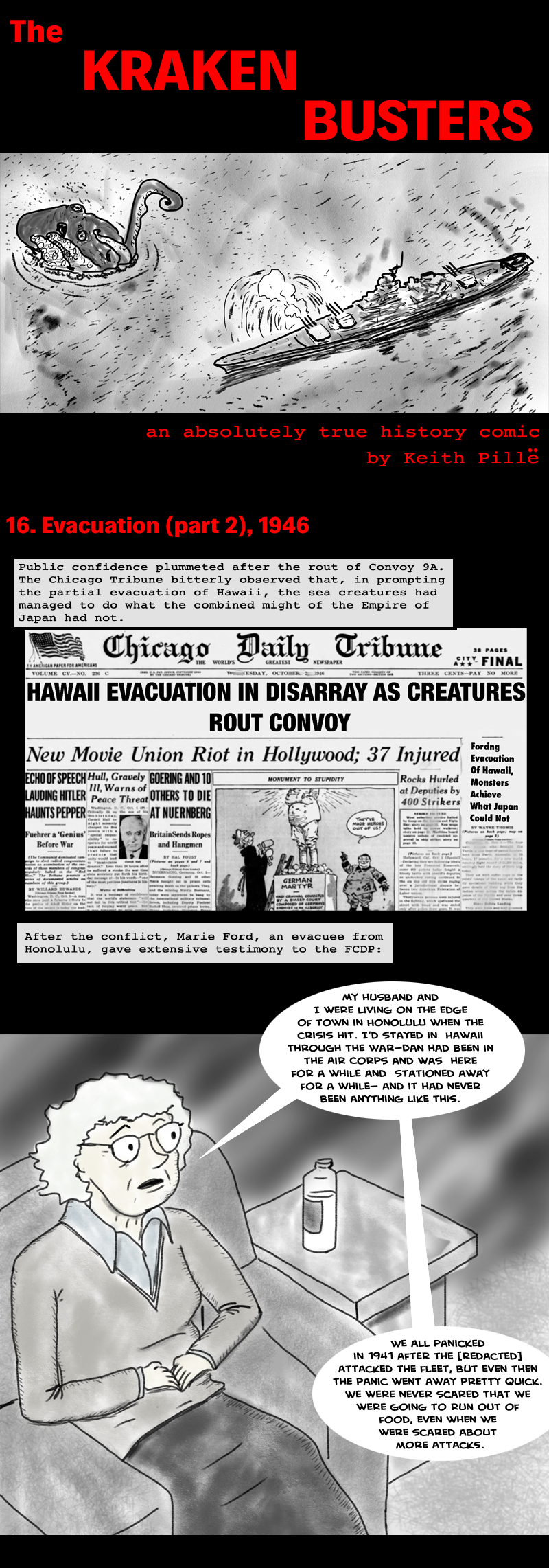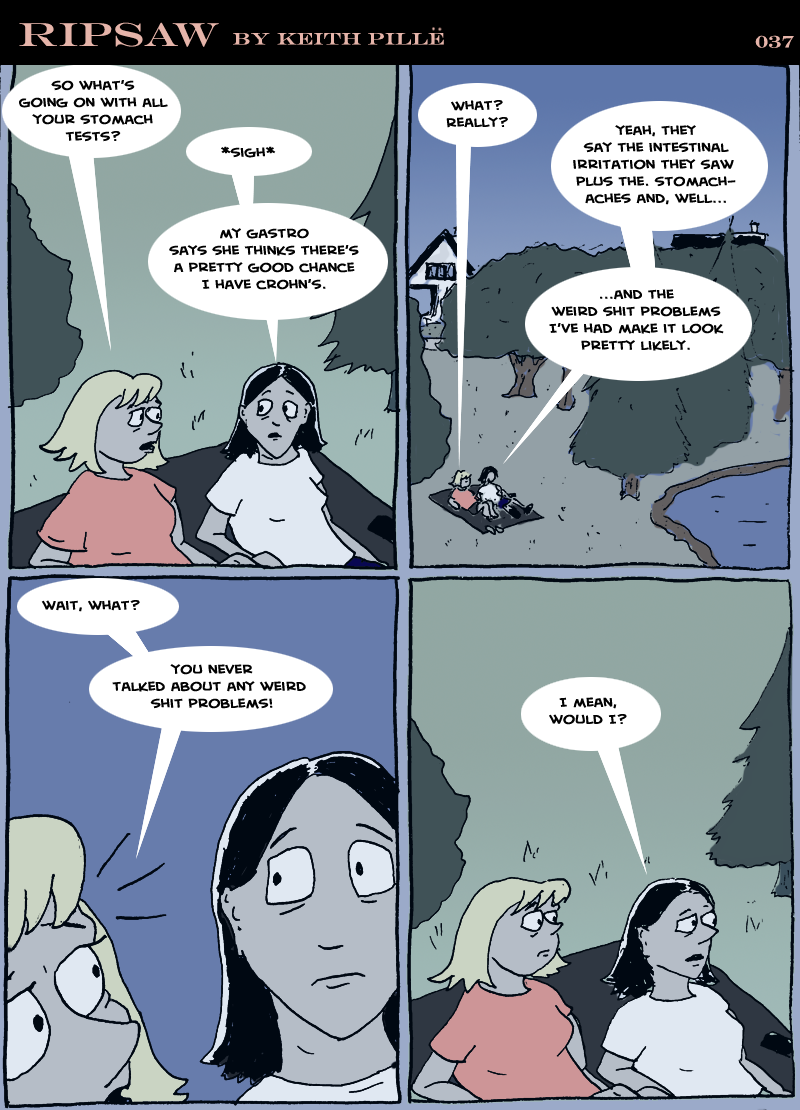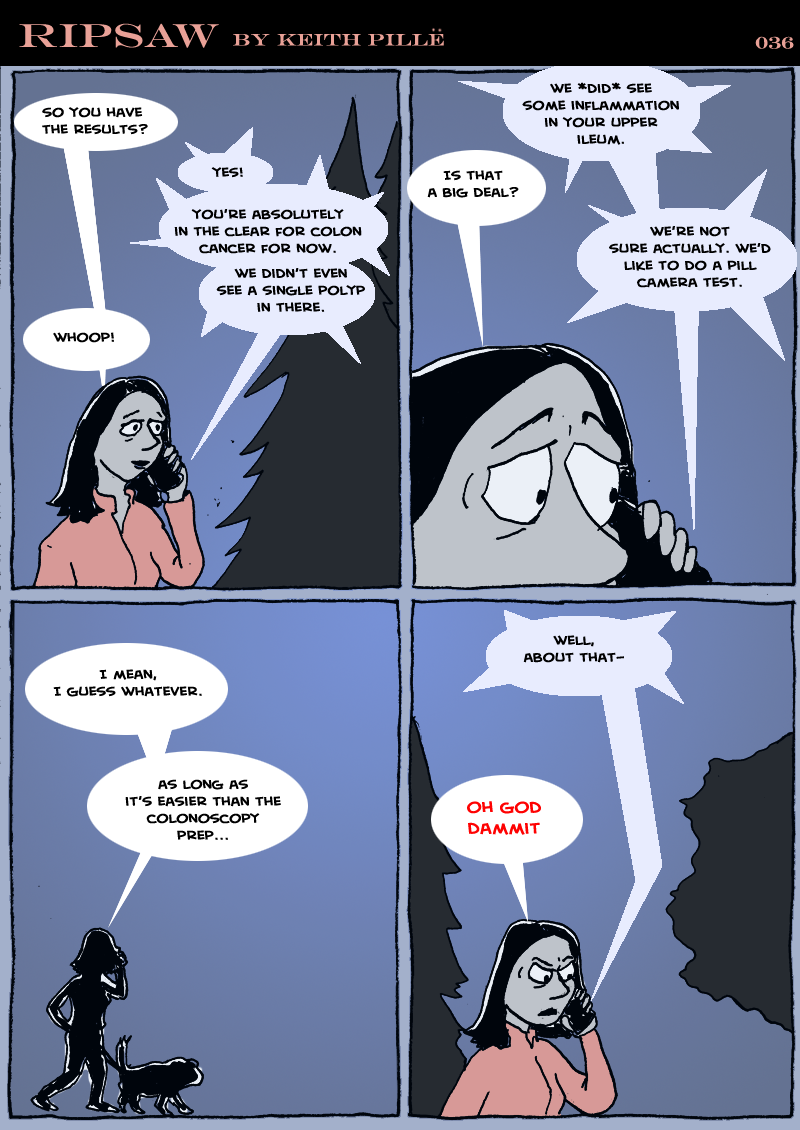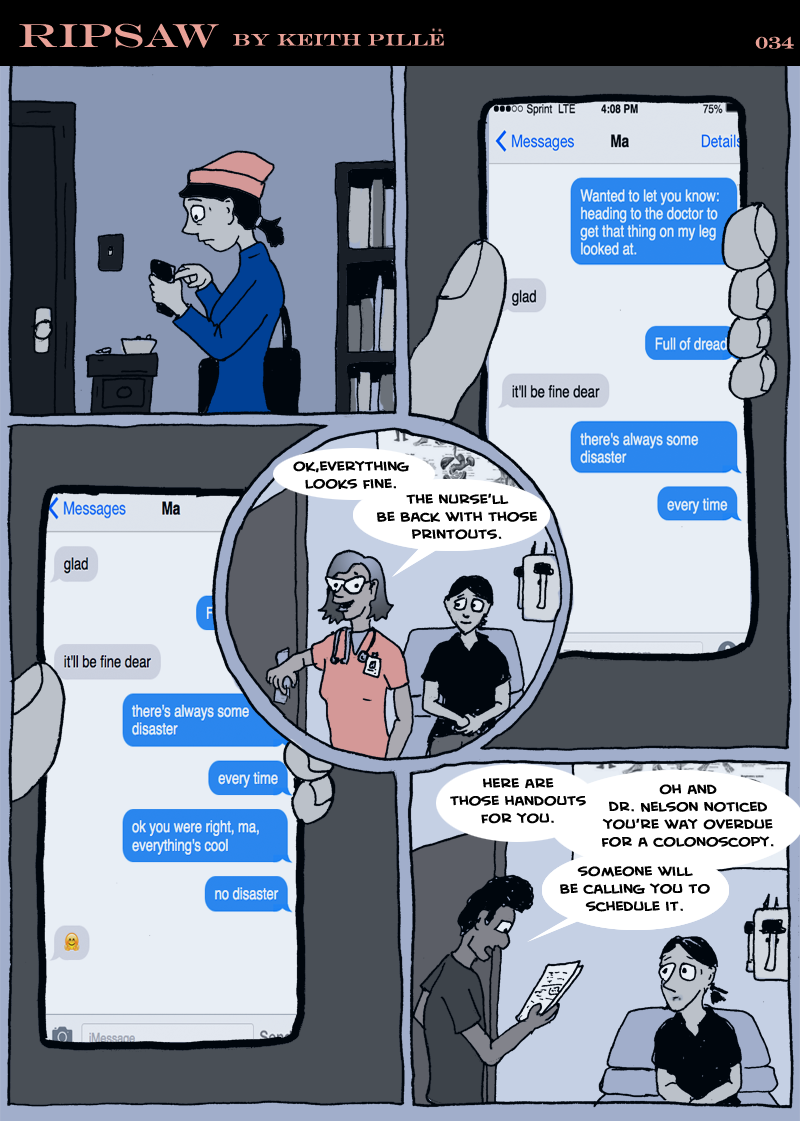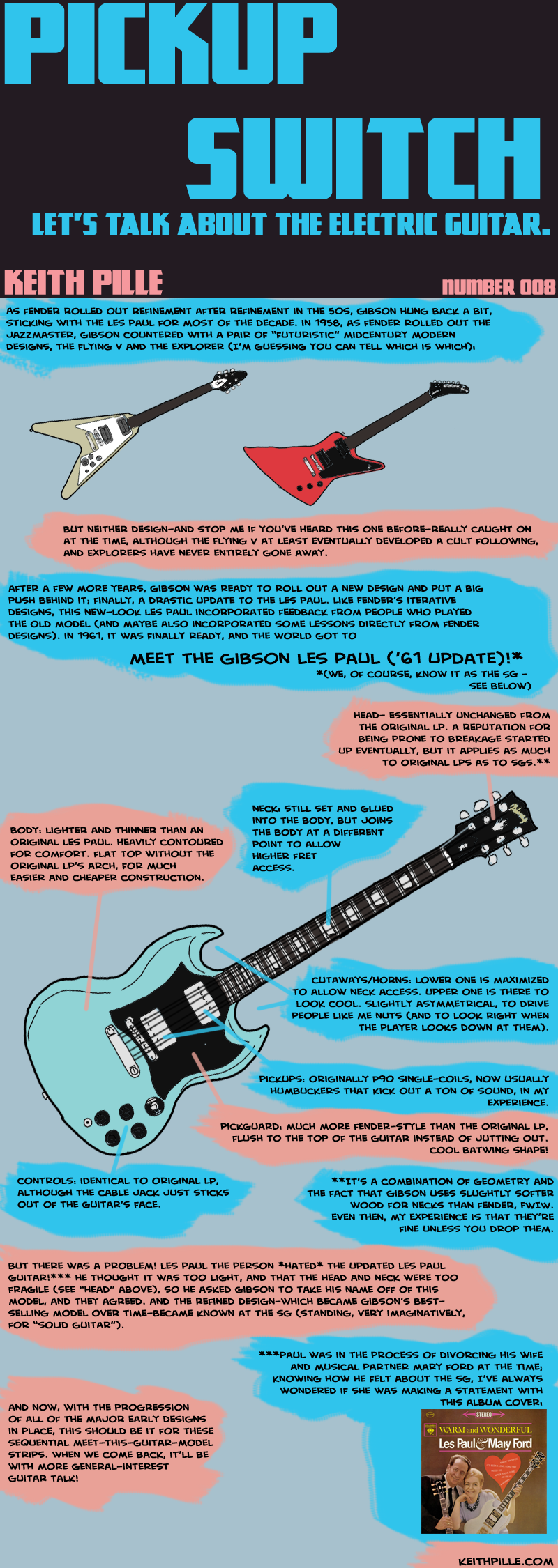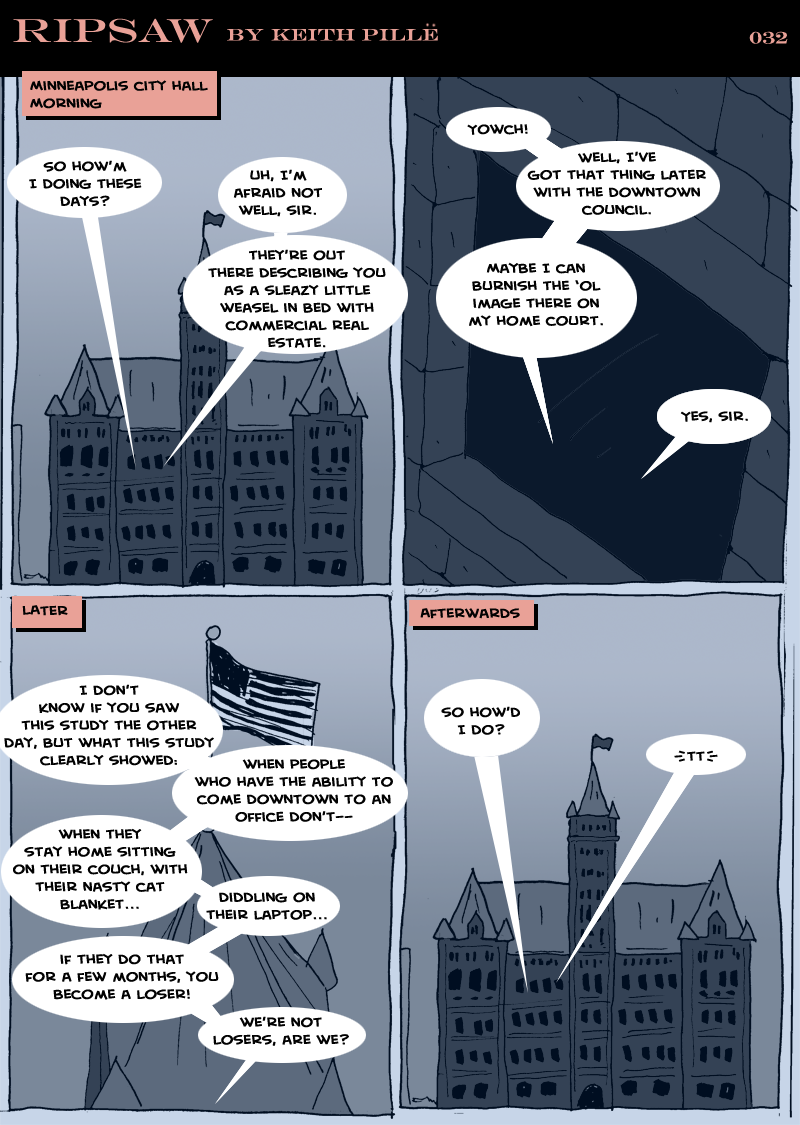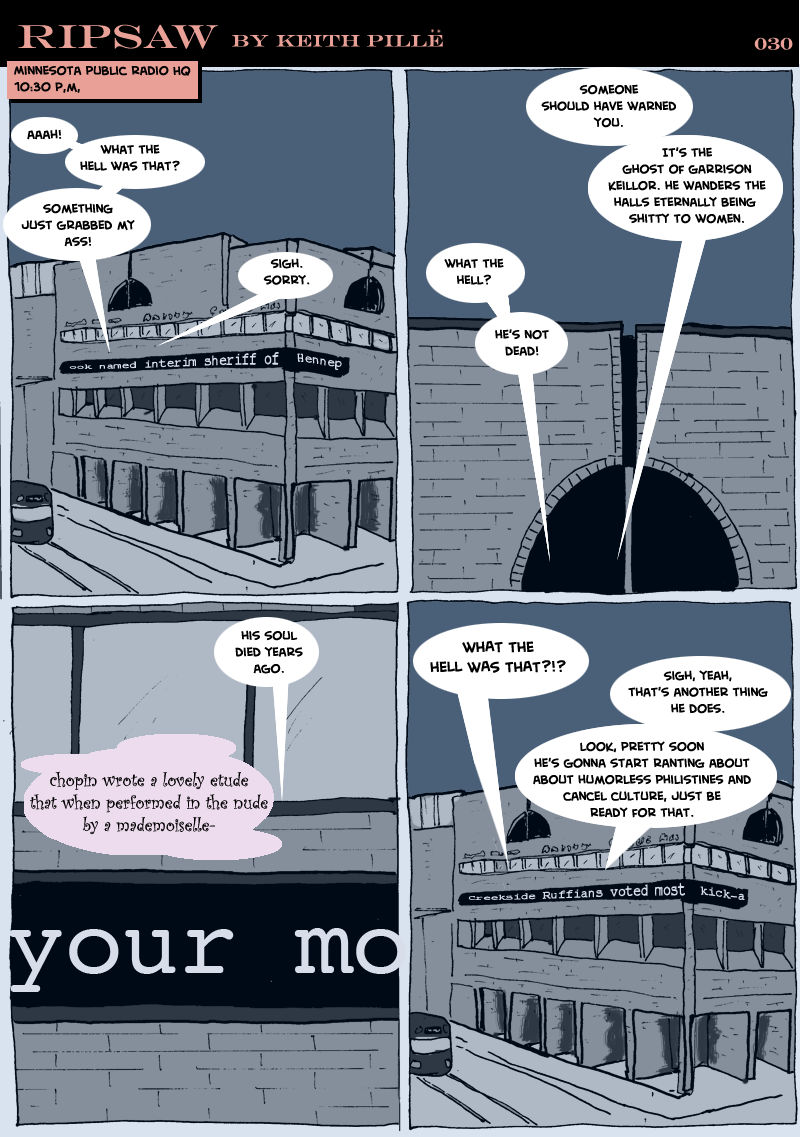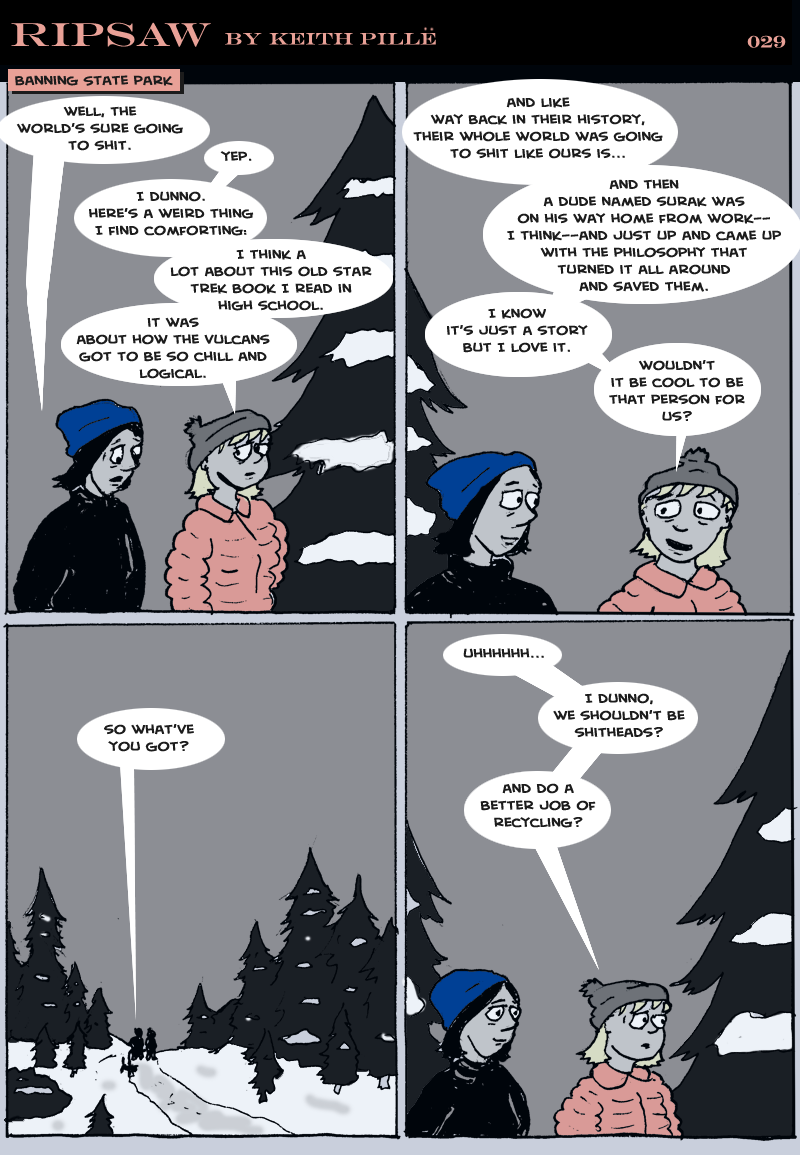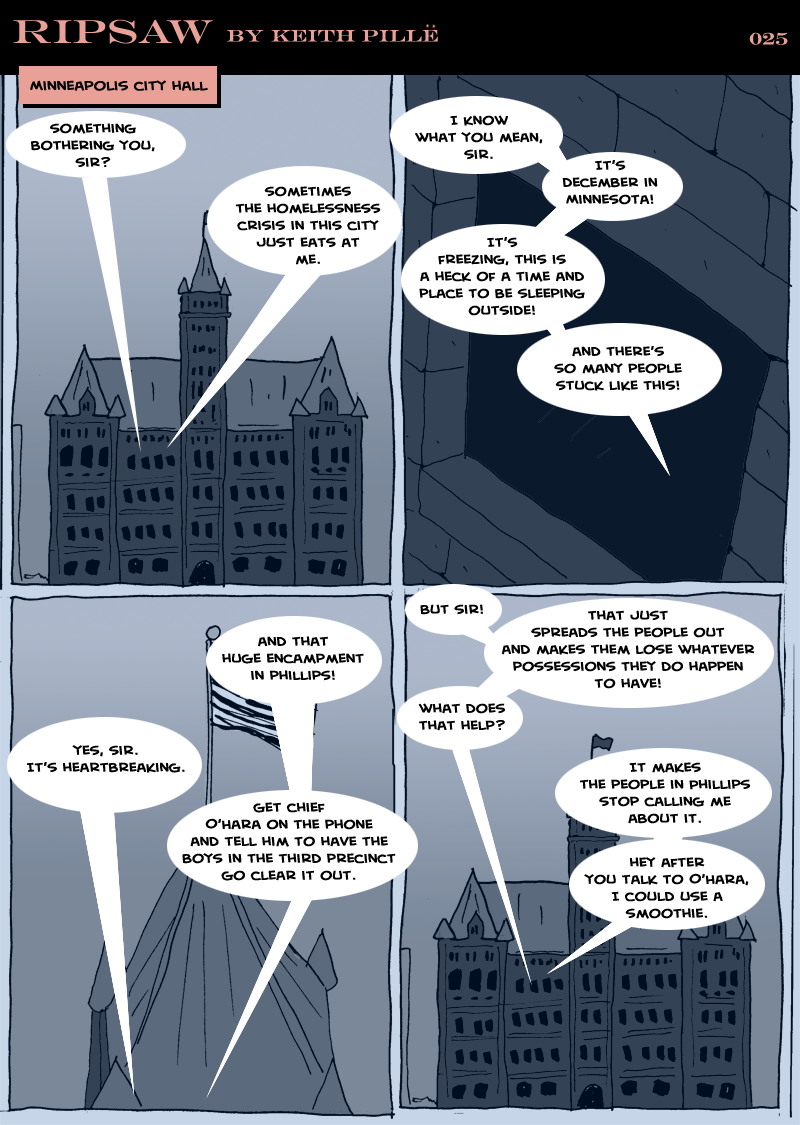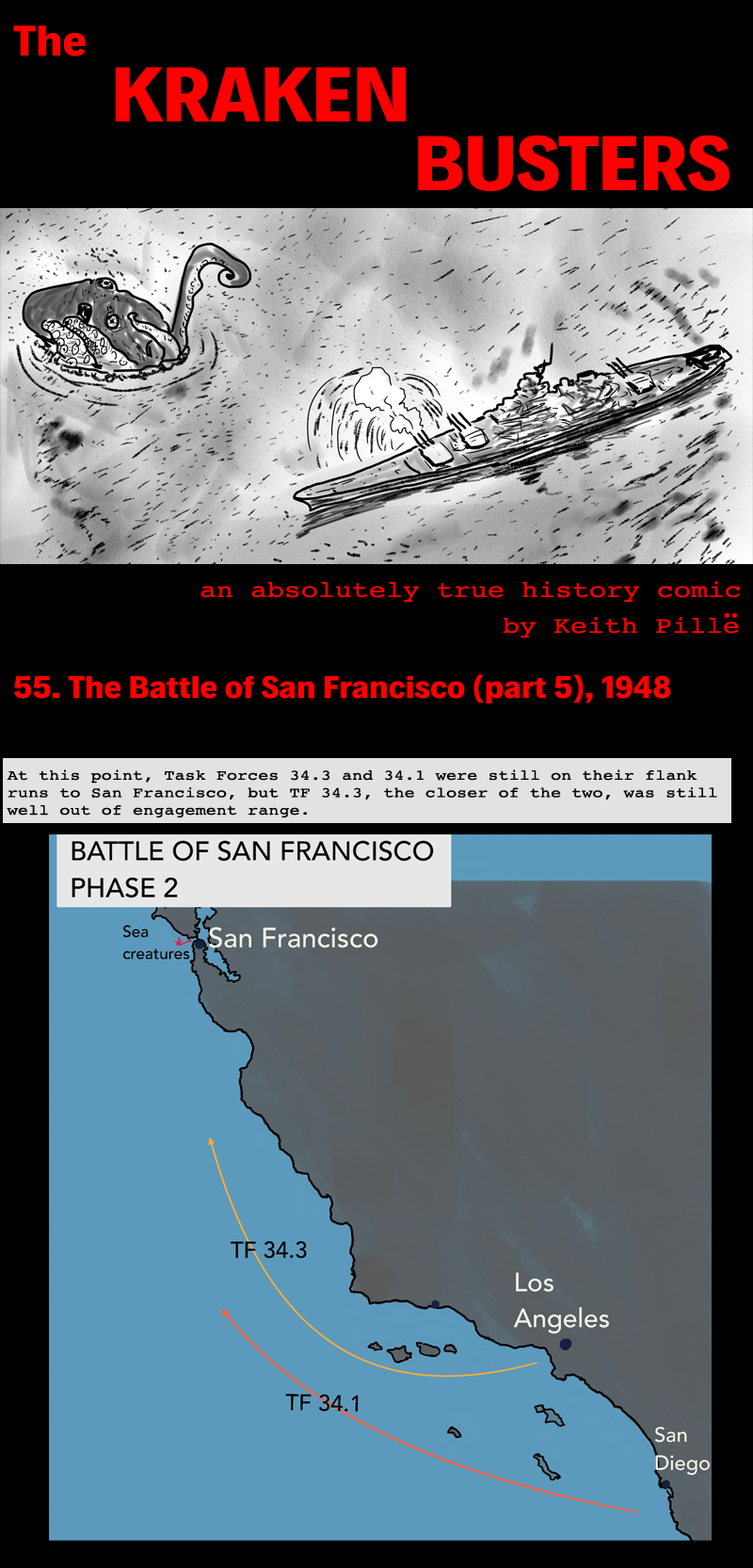
All posts by keithpille
The Kraken Busters 54
The 2026 Birds of the World Calendar

A few years ago, I went crazy in the month of October and drew a silly bird every day. A friend said, “you know what? I’d love to have those on a calendar!” So I whipped one up for her to be printable on normal office paper.
Well, these are dark times. And we could all use cool birds in our lives, right? So I updated the calendar for 2026 and made a new PDF.
And you can download it here if you’d like!
The calendar’s free to all (although I’d love to see picture of it hanging on your wall, if you do that), but if you download it and feel like kicking a little back to help enable my music gear addiction, I do have a ko-fi set up.
The Kraken Busters 53
The Kraken Busters 52
The Kraken Busters 51
The Kraken Busters 50
The Kraken Busters 49
The Kraken Busters 48
The Kraken Busters 47
The Kraken Busters 46
The Kraken Busters 45
The Kraken Busters 44
The Kraken Busters 43
The Kraken Busters 42
The Kraken Busters 41
The Kraken Busters 40
The Kraken Busters 39
The Kraken Busters 38
The Kraken Busters 37
The Kraken Busters 36
The Kraken Busters 35
The Kraken Busters 34
BE A GODDAMNED HUMAN: AN ART-MAKING MANIFESTO
0. What are we doing here?
Bottom line: I’m trying to get you to make art. Art within a very broad definition of what constitutes art. Messy human art. Art that might not make you any money (although it might! It doesn’t really matter either way!), but will make you feel better just for having made it.
I don’t want to center myself here, but if I’m going to say all of this, I feel like there’s some use very briefly establishing my background. So: I’m a multidisciplinary artist (and we’ll get to what’s “art” pretty quickly), and have been for over 30 years. My fields are writing, comics, drawing, and music. I’ve never made my sole living on art, but I have been paid for it and a couple of my comics projects have been covered by Twin Cities media outlets. I also have an M.A. in art history from the University of St. Thomas, with a thesis project about self-published comics. So: it’s certainly possible that what I say in this manifesto is wrong, but it at least all comes from direct experience and years of thought.
Continue reading BE A GODDAMNED HUMAN: AN ART-MAKING MANIFESTOThe Kraken Busters 33
The Kraken Busters 32
The Kraken Busters 31
The Kraken Busters 30
The Kraken Busters 29
The Kraken Busters 28
The Kraken Busters 27
The Kraken Busters 26
The Kraken Busters 25
The Kraken Busters 24
The Kraken Busters 23
The Kraken Busters 22
The Kraken Busters 21
The Kraken Busters 20
The Kraken Busters 19
The Kraken Busters 18
The Kraken Busters 17
The Kraken Busters 16
Let Us Now Praise Van Halen
No, really
These days I’m supposed to be putting my effort into cartooning. And I will be again soon! But sometimes events conspire to take over your brain and make you think about Van Halen, and what can you do? They weren’t big events—listening to a Wolf Van Halen interview, finding a trashy band bio in a used bookstore, and thinking about the enigma of David Lee Roth—but once the VH train gets rolling, you can’t stop it.
So let me start out by saying: I really like Van Halen. To an extent that I don’t know that you’d expect if you looked at me and saw a graying chunky-glasses south Minneapolis music dude who’s equally likely to be wearing a Husker Du or a Marty Stuart t-shirt. If you asked me to list 80s bands I love most, most of them are what you’d expect: Husker Du, the Replacements, R.E.M., the Pixies; but catch me in the right mood, and VH is right in there with them. They aren’t a band who needs a big music nerd to defend them; they succeeded on their own terms to a level that’s tough to comprehend. But I’m gonna praise them anyway.
And here’s the thing: Van Halen are basically unique in the space of American music. There are groups who—often intentionally—share some features, but there’s absolutely no one else who hits all the same weird points that they do. Fundamentally, they rock the hell out; but they do it with a sense of fun and variety and musical adventurousness. Upstream, their antecedents would be groups like Cream and Led Zeppelin and (to go American) Aerosmith in their better 70s mode; but from the jump VH represented a nearly clean break with the electrified blues those groups were bashing out. Jimmy Page talks about first encountering an Eddie Van Halen solo—oddly, it was the one in Michael Jackson’s “Beat It”—and being startled by the impossible shit he was hearing; Marc Maron talks about how high school parking lots just abruptly sounded different in 1978 when the first Van Halen album came out.
Continue reading Let Us Now Praise Van HalenThe Kraken Busters 15
The Kraken Busters 14
The Kraken Busters 13

Two last quick things! If you’re enjoying these strips, please consider helping to spread the word! Tell a person who might like them, or post on social media, or whatever feels right. And if you really dig the story and have some change rattling around in your pocket, I’ve got a ko-fi set up. No expectations, but hey, support’s always welcome.
The Kraken Busters 12
The Kraken Busters 11
The Kraken Busters 10
The Kraken Busters 09
The Kraken Busters 08
The Kraken Busters 07
The Kraken Busters 06
The Kraken Busters 05
The Kraken Busters 04
The Kraken Busters 03
The Kraken Busters 02
The Kraken Busters- now in (experimental) comic form!
So you’ve probably heard me talk about the book I wrote about the US Navy fighting sea monsters in the 1940s, and then the subsequent podcast adaptation that I did of it. Well, I have a terminal case of Cartoonist Brain, so with a story like that sloshing around in my head, it was inevitable that I’d start getting ideas about different ways that it could be presented visually. And this started to drive me nuts.
And then, inevitably: I sat down to give it a shot. So here is Episode 1 of a notional Kraken Busters comic, trying out some visual ideas and also leaning into some cartooning techniques I’ve never tried before. This might be a one-off, or it might be the start of a massive ongoing project to adapt the whole thing; if you dig it, please let me know, because that could help determine which way this goes (same thing, I guess, if you really think it sucks!).
| Next >

Ripsaw 037
Ripsaw 036
A LIFE IN FILM #19 – SINGLES
A Life in Film is a project where I’m writing about a movie from every year I’ve been alive.
1992: Let’s not even talk about the weird Xavier McDaniel joke
SINGLES (dir. Cameron Crowe)
I don’t know what it’s like to grow up as part of any generation other than X. Maybe the oldest Millennials, since I often find my cultural sympathies lining up with those a little bit younger than me. But that’s it. Like all of us, I’m a product of my time.
Which, in my case, means that I was starting to assemble the first draft of my adult self during the stretch when Singles had its weird little supernova interlude. I don’t know that it was a movie that meant much to, say, 40-year-old lawyers or even 17-year-olds who were thinking of joining the Air Force after they graduated; but among the nerdy, music-centered college-bound youth cohort that I was part of, this thing blew up like a firecracker. Out of nowhere, and for a little while, this movie exerted a bizarre cultural gravity. Not nearly as widespread as Batman, but very intense in its niche. The only album I’ve ever experienced peer pressure around “when are you gonna get it, you lameass?” was the Singles soundtrack, which went on to spend a few years as a member of the 90s De Rigeur Dorm CDs Starter Pack.

And that soundtrack album is tightly tied into the whole thing. The interplay between music and movie was a knot you couldn’t cut. They were conjoined*. The movie was noteworthy because of the soundtrack, which was noteworthy because it was so Seattle-heavy, which of course it was because this was a movie about music-loving folks in Seattle, which hey did you hear that Seattle is where things are happening right now? Anyway, Pearl Jam and Chris Cornell figure somewhat prominently in both movie and album.
*Consider the fact that the title of the movie itself is a triple entendre: singles as in single people, singles as in one-bedroom apartments, and—of course—singles as in music.
Continue reading A LIFE IN FILM #19 – SINGLESRipsaw 035
A LIFE IN FILM #18 – THE COMMITMENTS
A Life in Film is a project where I’m writing about a movie from every year I’ve been alive.
1991: I’ve an arse here you can kiss.
THE COMMITMENTS (dir. Alan Parker)

To repeat a sentiment I’ve used a lot in this space: The Commitments is not a capital-letter Great Movie, but in its low-key way it is a great little movie about music. It’s about the joy inherent to making music with other people, one of the great collaborative pleasures of life. And, equally, about the bullshit that can come along with it. Maybe bullshit’s too strong a word; friction’s better. Interpersonal disputes, technical problems, trouble booking shows, miscommunications, you name it—all the stuff that I spent years talking about (at roughly Commitments-level stakes) in Nowhere Band.
And the level of the stakes is important there. This Is Spinal Tap covered a lot of the same ground, but at a different level. For all that Spinal Tap’s career problems are central to whatever plot that movie has, they’re still big enough to play arenas (when they’re not opening for puppet shows) and release albums on major labels. The Commitments, on the other hand, are at ground level and they’re going to stay there. The Commitments’ world isn’t that different from the one the Awesome Boys navigate in Nowhere Band, or—not coincidentally—the real one my bands the Creekside Ruffians and Derailleur have moved through. It’s the world of bands that are never going to make anything more than beer money. And if that’s less glamorous than the world of pro musicians, it’s accessible and relatable, since it’s where most of us who own instruments are going to spend all of our time. It’s the reality of what making music is like for the vast majority of people making music. And it’s even still pretty aspirational, because, as the movie illustrates, it’s just a shitload of fun to play instruments and yell with other people.
Continue reading A LIFE IN FILM #18 – THE COMMITMENTSRipsaw 034
A LIFE IN FILM #17 – THE HUNT FOR RED OCTOBER
A Life in Film is a project where I’m writing about a movie from every year I’ve been alive.
1990: Dudes Rock Under the Sea
THE HUNT FOR RED OCTOBER (dir. John McTiernan)
To lean again on the autobio part of this project: The Hunt for Red October is another one that I’m not about to claim is great cinema (although as a really well-executed-more-or-less-based-in-something-resembling-the-real-world thriller, it’s maybe a great example of a type of cinema that I’d love to see more of in the modern era). But it’s a movie that appealed to a bunch of my interests when it came out, and maybe helped cement them as things that would stay on my mind for the long haul. And it’s also a ton of fun, which is nothing to sneeze at.
But those interests. This was, of course, the first film adaptation of a Tom Clancy book (FWIW, I feel like it’s by far the best Clancy movie, adapting his best book). I was at the time going through the kind of Tom Clancy megafan phase that only makes sense when you remember that it was before the internet and I was living in deeply conservative rural Nebraska and the pipeline for new-author discovery was, uh, limited. I’ve written at length about my difficult mental relationship with the works of Thomas Clancy, but at the time I thought he was better than Hormel chili and any movie adaptation was something I had to see.
Clancy’s books, including Red October, often center on the CIA, which was another major interest at the time. Of course, nerdy adolescent boys often get interested in spying; that’s nothing unusual. What made me different was that I damn well did something about it, going through a process that came pretty close to getting me a job at the CIA *and* getting me a very unfortunate hat from Structure (and yeah, this is a thing I mention at the end of the linked comic, but it’s worth mentioning here: given where my mind and politics went as the 90s progressed, I think it was best for both me and the CIA that the thing didn’t work out).

Pickup Switch #8
Pickup Switch #7
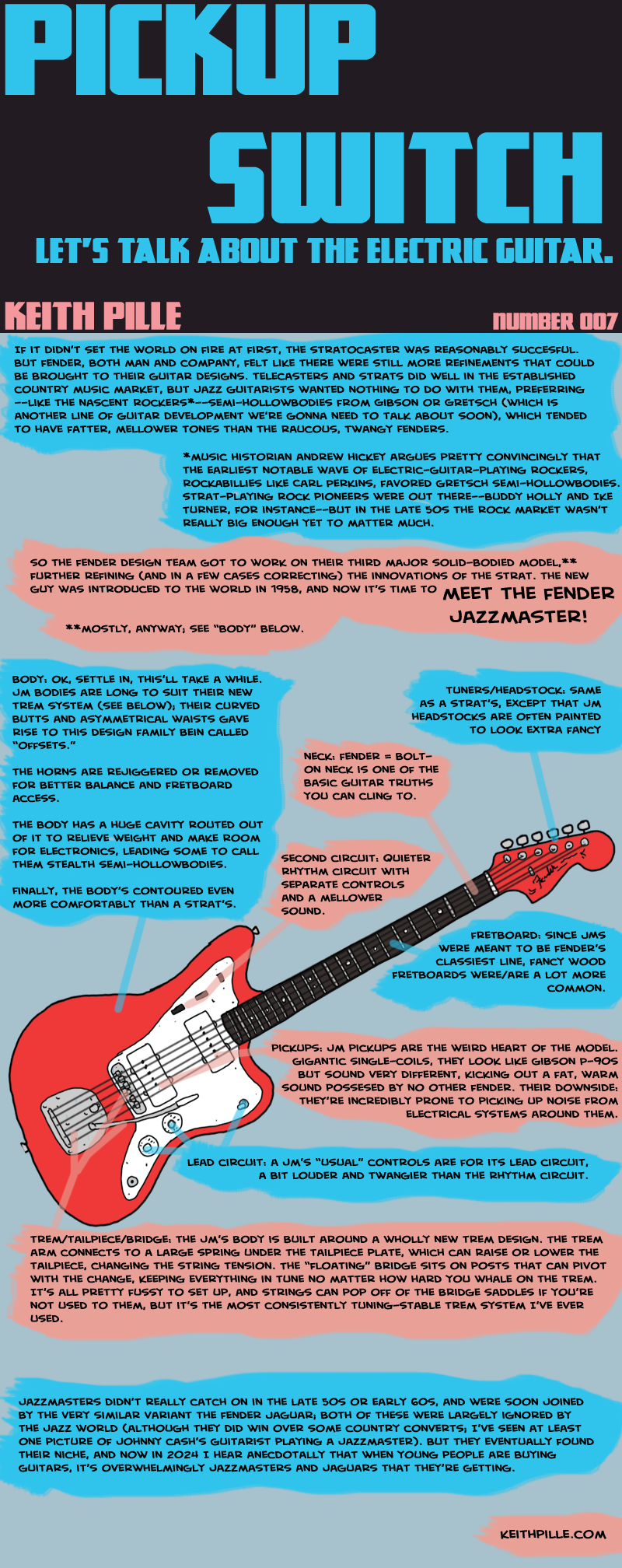
<< FIRST STRIP | < PREVIOUS | NEXT STRIP >
I should add that this run of “meet the…” strips detailing the iterative designs of the 50s and 60s is almost done! One more, and then it should be on to more general-purpose guitar-talkin’.
A LIFE IN FILM #16 – BATMAN
A Life in Film is a project where I’m writing about a movie from every year I’ve been alive.
1989: Look. I’m sorry.
BATMAN (dir. Tim Burton)
I don’t know about you, but I’m pretty tired of superheroes on film.
But the thing is (*looks around*), this is all my fault. Well, mine and the fault of thousands of other people who had opinions about who the best writer for Superman was or what we’re supposed to take from the ending of Watchmen. We all thought “god, superhero comics can be cheesy, but they can also be so much fun, so resonant, and such fertile ground for metaphors that can really take you to interesting places looking at the real world! Wouldn’t it be great if everyone would wake up to this and get on board?” And then a monkey’s paw twitched, and a long fuse started burning, eventually leading to a world where everything at the multiplex was competing examples of CGI punchfest dogshit where all the life and humanity had been purged by a corporate assembly line filmmaking process.
This isn’t true, of course; or at least it’s not true in the sense that there weren’t actually any cursed monkey’s paws involved. But I do think that there’s probably some truth to the idea that the critical mass of comicsheads in the early 00s who all went and bought tickets to the first Nolan Batman movie, and to the Raimi Spider-Man movies, and the Singer X-Men movies, we were the accelerant that gave Hollywood in general and Disney in particular the idea that there was endless money to be made by quadrupling down on this superhero thing. It’s not just a thing that we let happen; it’s a thing that we cheered on at the time. And I don’t feel great about that.
Tracing definitive cause and effect in stuff like this is rarely possible, of course. But I feel like it’s reasonable to say that a lot of my cohort of 2000s-era young nerds with disposable income were all put onto this track just by living through the hype cycle for Burton’s Batman.*
*Purists will no doubt argue that the Donner-Reeves Superman movie was there laying groundwork a decade earlier, and that Superman and Batman had been showing up in movies since the 40s. And this is all true, of course! But subjectively, at the time, the Batman ’89 hype cycle felt different and more lasting, even if I’m just saying that from the center of the marketing-push blast zone.

A LIFE IN FILM #15 – A FISH CALLED WANDA
A Life in Film is a project where I’m writing about a movie from every year I’ve been alive.
1988: You’re a true vulgarian!
A FISH CALLED WANDA (dir. Charles Crichton and John Cleese)
Maybe this isn’t universal, but I think it’s pretty close, at least among musicheads: when we’re young, we think and expect that the bands we love are all best friends and communal life partners. Maybe they all live in a big house together, or at least wish they did. That’s the way it worked on The Monkees, right? So it must be real. And then, of course, to get a little older and start more serious learning about music is to come to understand that this pretty much is never how it works.
Monty Python weren’t a band, of course, but everyone I knew back in the 80s mapped the same sort of belief onto them. I have to assume that the culture has shifted significantly in the years since then, but when I was a kid it was just a given that a sizable minority of us were going to get exposed to Monty Python and the Holy Grail at a birthday party or sleepover and then have our minds totally colonized by the Pythons, leading to a feverish walk through their filmography (difficult but possible in the 80s, given VCRs and cable tv) and a general belief that they were the Most Important Thing Ever. And then we’d all realize that the Most Important Thing Ever didn’t seem to be putting out any movies after Meaning of Life, and we’d all wonder: what was wrong? Did they not love each other anymore? Had the band broken up? Oh shit, the band must have broken up!*
*For this to make any sense at all, of course, you have to remember that in 1986 there wasn’t an internet that you could pop open to look at a Wiki page. I don’t think anyone I knew would have had any idea back then how to figure out what the actual status of Monty Python was, beyond maybe asking our parents, who—remember, this is rural Nebraska here—wouldn’t have had a fucking clue.
All of which is to say: when I was in junior high and A Fish Called Wanda started creeping into my friends’ collective consciousness through the twin media of cable tv and video rentals, it was a big deal. New Python-ish stuff! Sure, it didn’t have all of them (and was it true that maybe one of them was dead?), but it had Cleese and Palin, and those were two of the bigs, and right fuckin’ on!

Pickup Switch #6
A LIFE IN FILM #14 – RAISING ARIZONA
A Life in Film is a project where I’m writing about a movie from every year I’ve been alive.
1987: I’ll be taking these Huggies and whatever cash you got.
RAISING ARIZONA (dir. Joel Coen, officially, but come on)
I never want to lean too hard on the autobio side of this project, but in this case it’s really hard not to, at least a little. More than any other movie I’ve talked about, and on a couple of different axes, Raising Arizona was a movie that served as a gateway to other places and ideas. If you weren’t around in the 1980s, I don’t know that you can really appreciate what it was like to encounter Raising Arizona for the first time. I’ve probably said this sort of thing before, but it’s like 50 times as true for Arizona than it is for anything else.
There’s this body of discourse that floats around Bluesky pretty frequently about how the 80s weren’t the cool neon vaporwave retrofuturescape that gets held up with some frequency as a stand-in for the era, that it was actually a whole lot more beige than people try to pretend it was; and, as usually with a discussion like that, I sort of simultaneously agree and think it’s more complicated than that. But I think there’s a parallel argument to be had about 80s culture; we remember the good and the notably bad, but that memory of extremes really obscures the fact that most of what we watched, listened to, and read in the 80s was pretty boring, mid, and, well, culturally beige.
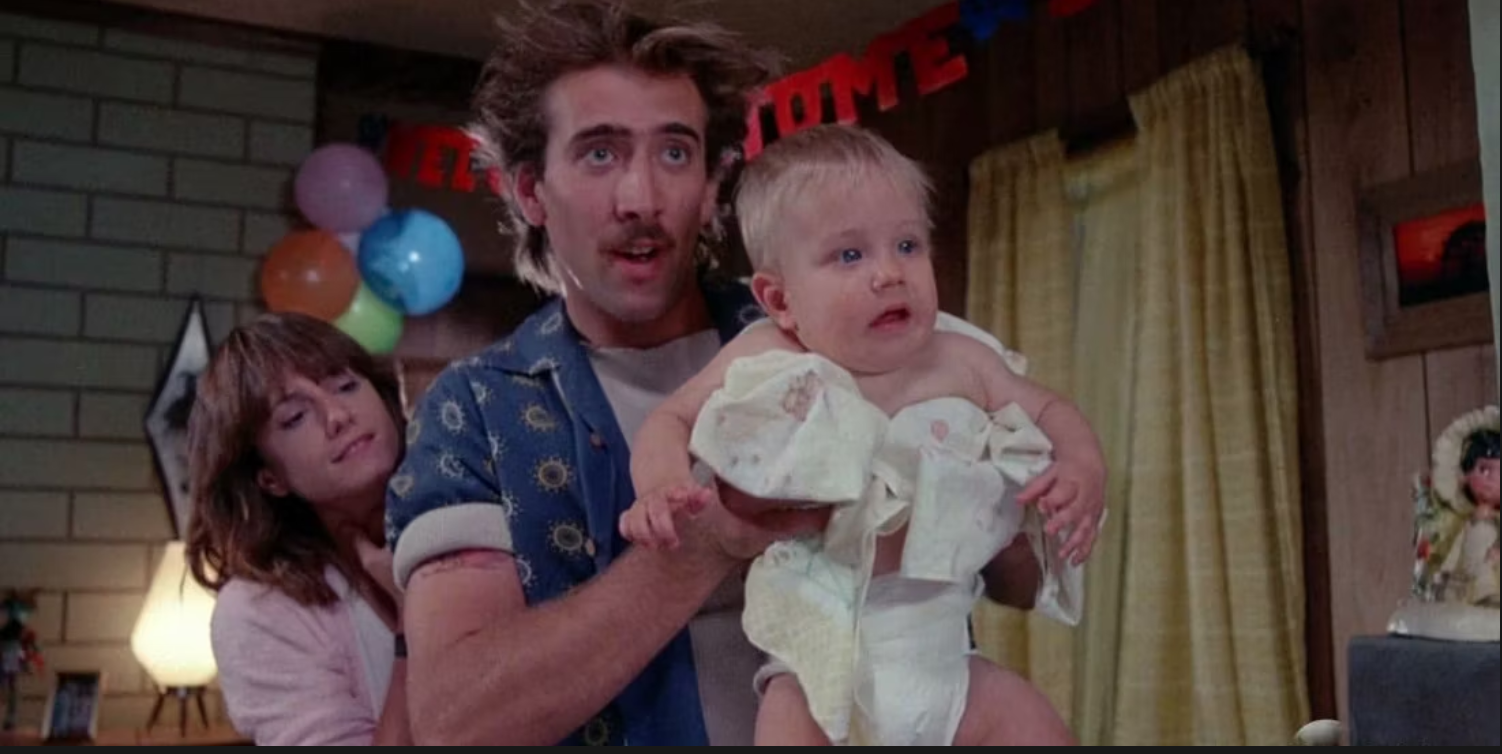
And I can promise you that in the cultural landscape of the Reagan era, damn few people were making unhinged live-action Looney Tunes cartoons that piled off-kilter dialogue, surreal action, and a lot of banjo-and-yodelling songs around a resonant emotional core. “What on Earth is this?” was the vibe the first time I saw Arizona. “I don’t entirely know what the hell’s going on, and I didn’t know you could do stuff like this in a movie, but I am into it.”
Continue reading A LIFE IN FILM #14 – RAISING ARIZONAPickup Switch #5
Pickup Switch #4
Ripsaw 033
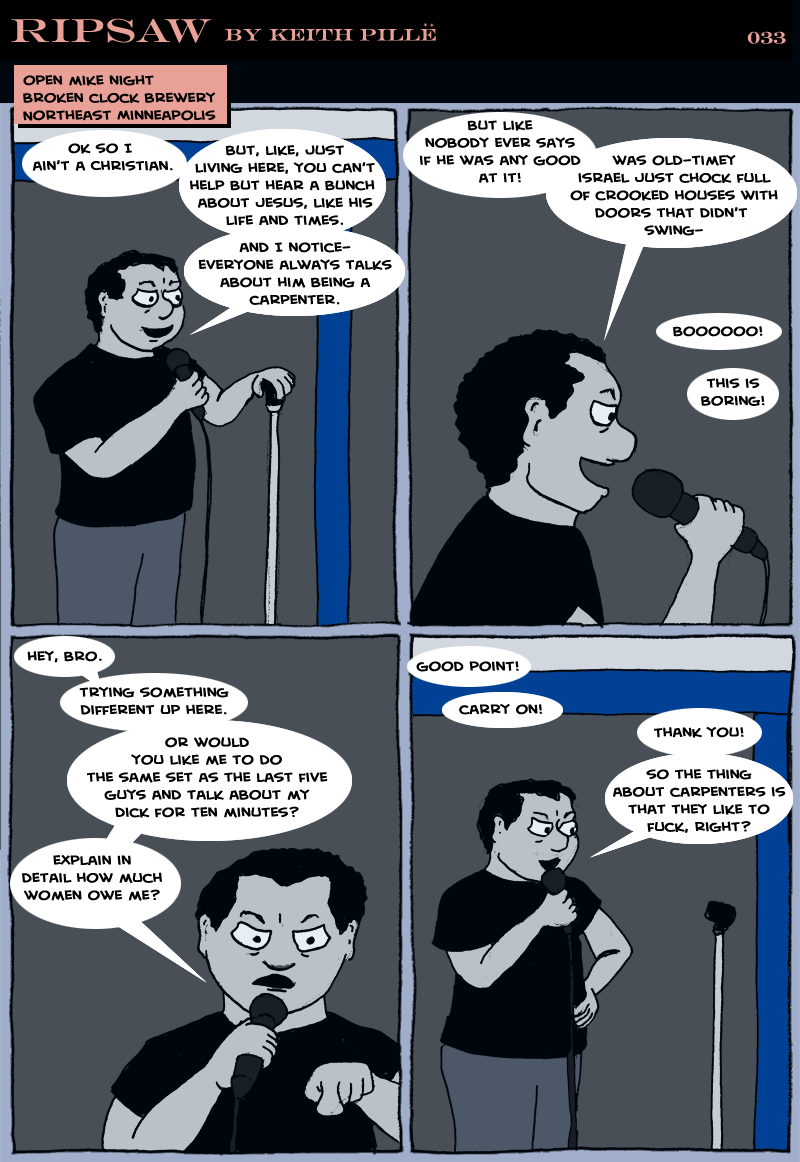
<< FIRST STRIP | < PREVIOUS | NEXT STRIP >
Maybe worth noting that I kind of have a 3-way creative split going on right now between Ripsaw, Pickup Switch, and A Life in Film (4-way if you include the band, I guess), so progress on all of them might be a little slow, especially for the next couple of weeks as I settle into a new job. I know you’re supposed to just pick one thing and be good at it, but that’s not how my brain works.
Just know that nothing’s being abandoned, it’s all just moving along at its own pace. And thanks!
A LIFE IN FILM #13- THE TRANSFORMERS: THE MOVIE
A Life in Film is a project where I’m writing about a movie from every year I’ve been alive.
1986: A Ton of Bricks
THE TRANSFORMERS: THE MOVIE (dir. Nelson Shin)
And here’s another one that I’m not really about to call a great movie, or even a good movie.* ** But, to me at least, there are some ways that The Transformers: The Movie is an interesting movie. And if I’m reading my own concept for this project to indicate that I should be talking about movies that were important to me in their year (and I don’t always read it this way, but I definitely do sometimes), well this one couldn’t be more relevant; I think Return of the Jedi is the only other movie that came out within the timeframe covered so far that Young Me was as hyped about in advance as this one.
*And even if Transformers ’86 isn’t really a good movie, it’s far, far better than the Bay Transformers movies, or even its peer in late-80s animated toy commercialdom, the GI Joe movie.
**OK, but also: how hard must Jack Kirby have sighed whenever he heard that the big bad in this new movie was a godlike planet-eating space monster? Like, I know the Transformers movie and the comics were completely different things (and Kirby of course had no direct connection with either of them), but still, it’s all adjacent enough that he had to have heard about it at some point.
And I don’t think I’m alone in that; in fact, I think part of what does give Transformers ’86 a little bit of interesting heft in 2024 is that this fucker hit a lot of Gen X like a ton of bricks, and this was the cohort that would go on a few years later to start early-adopting the internet. One of my very first online experiences—aside from endlessly looking up people’s guesses at R.E.M. lyrics—was reading an extended, heartfelt post on some message board about how Optimus Prime and Megatron were archetypal figures while Rodimus Prime and Galvatron were flawed and “realistic” and this shift indicated a move from DC-style storytelling to Marvel-style and, well, I’m not saying this particular line of analysis is one that I’ve spent a lot of time on, but this type of analysis is going on more or less constantly in my head all the time and I think this goddamned post on Usenet or wherever is what kicked it all off. A bunch of us spent the 90s using this cool new interconnected web toy thing-o teaching ourselves to collaboratively dig through the semiotics of pop culture.

Pickup Switch #3

<< FIRST STRIP | < PREVIOUS | NEXT STRIP >
This is–by a wide margin–the most words I have ever put into any comic.
Pickup Switch #2
A LIFE IN FILM #12 – BACK TO THE FUTURE
A Life in Film is a project where I’m writing about a movie from every year I’ve been alive.
1985: Things Have Turned Out Just Fine
BACK TO THE FUTURE (dir. Robert Zemeckis)
Let’s start by acknowledging something: I don’t know that there’s a ton I can say about Back to the Future as a standalone movie that hasn’t already been said. The discourse is pretty well-developed: it’s a beloved classic for a reason; it’s a great use of the talents of Michael J. Fox, Lea Thompson, Christopher Lloyd, and Tom Wilson; the bit about Marty teaching Chuck Berry about rock and roll is pretty problematic; one joke does lean a little too hard on the idea of Huey Lewis being a super loud rock and roller; and the timing of the climactic power-the-car-with-a-lightning-bolt scene makes no damn sense, no matter how exciting the scene is.
Oh, and the collected Freudians of the world must have collectively shit their pants when this movie came out and was a hit.
Anyway, rather than focus on the specifics of Back to the Future, I wanted to use the movie to pull back and talk more widely about a commonality I’ve noticed in a whole bunch of time travel movies. This, after all, is one of the most famous of the genre, and it’s probably the one that I’ve spent the most time thinking about.

Pickup Switch #1
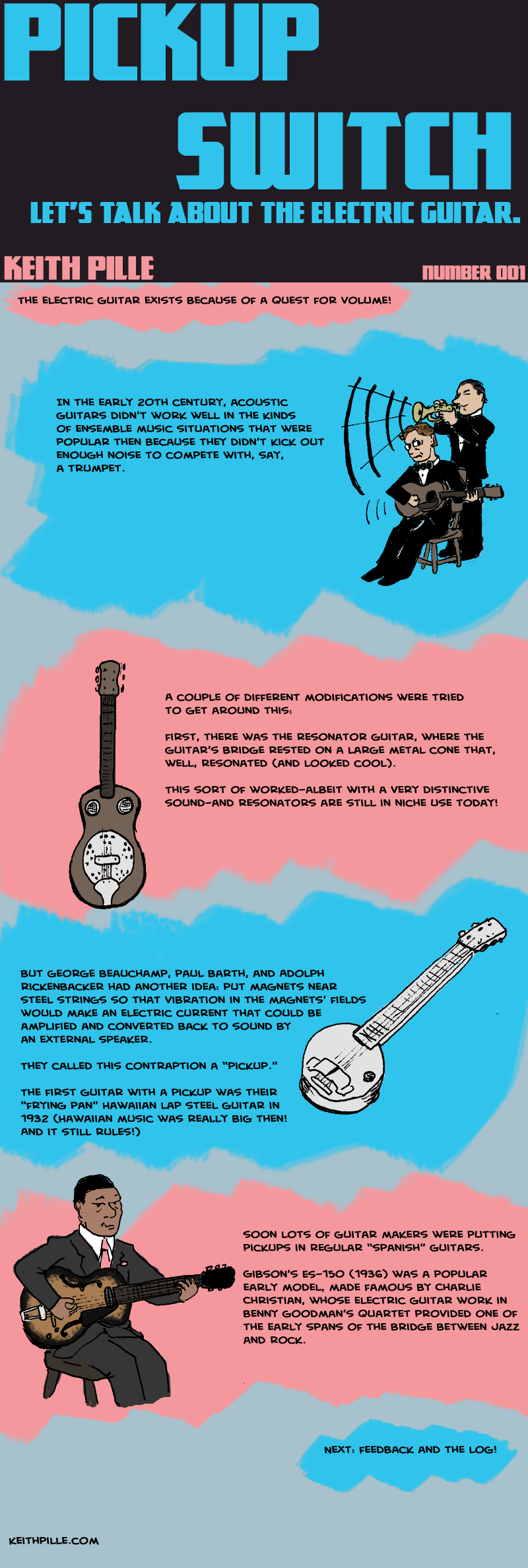
OK! Here’s the next thing I’m trying!
If you follow me on Bluesky (or used to follow me on Twitter), you know I have a bazillion opinions on electric guitars. So I thought it might be fun and interesting to try a nonfiction comic about ’em. I’ll be looking at the history, design, and function of electric guitars.
Does this mean that Ripsaw’s done? Nope! That was always gonna be a strip that would run for a while and then sleep for a while; so this is a thing that will happen during Ripsaw naps. And vice versa.
A LIFE IN FILM #11 – THIS IS SPINAL TAP
A Life in Film is a project where I’m writing about a movie from every year I’ve been alive.
1984: Just a Bunch of Working Stiffs
THIS IS SPINAL TAP (dir. Rob Reiner)
Moving into double digits with this project, I can see a few patterns emerging. One of these is that there are a couple of situations where I’m nervous to do the writeup. If it’s a widely-loved movie that I’m not so crazy about, I get nervous, because I feel like I really have to make my case if I’m going to be critical, or I’m going to piss people off or look like an idiot. Conversely, if it’s a movie that I absolutely love, I get nervous because I don’t want to just gush, because I can’t be objective. I might piss people off or look like an idiot.
Because yeah. I love This Is Spinal Tap. I love it more than most other movies that I’d say I love. It’s an absolute pantheon movie, one of those handful where I feel like it makes some sense to view my life through a before-I-saw-this/after-I-saw-this lens. I love music so much that sometimes it makes me wonder about my own sanity; I think I first saw This Is Spinal Tap at about the time this truth about my brain was making itself known to me. This Is Spinal Tap is magical because it manages to simultaneously be insanely funny while also encompassing a world of truth about music, especially rock music, double especially the world of rock music in the late 20th century as that artistic era started to move into its baroque phase.

Let’s not kid ourselves: music is a little absurd on several levels, if you step back and look; and so is our love for it. What is music, really? It’s air vibrating in specific patterns. That’s it. To love music is to have really strong opinions about how you want the air around you to vibrate. That, I submit, is a pretty absurd foundation on which to build.
Continue reading A LIFE IN FILM #11 – THIS IS SPINAL TAPRipsaw 032
A LIFE IN FILM #10 – THE RIGHT STUFF
A Life in Film is a project where I’m writing about a movie from every year I’ve been alive.
1983: The Perils of Adaptation
THE RIGHT STUFF (dir. Philip Kaufman)
With some of these, I get very nervous about doing the actual writeup. And this is very much one of those. Because no matter how much I want to—and I want to pretty badly—I just don’t like this movie very much. And I know it’s a (partial) consensus classic, and it feels weird to go against the consensus. But I can’t help it! No matter how much other people like it, no matter how much it involves people I like, concepts I like, and adapts a book I like, I just can’t really get with The Right Stuff. I don’t hate it, but, except for some individual sequences (and maybe one of the ongoing storylines), I can’t get better than lukewarm about it.
For me, what hobbles The Right Stuff is that the movie doesn’t know what it wants to be. Kaufman and William Goldman famously fought over the screenplay, with Goldman eventually leaving and washing his hands of the matter. And that unresolved fight is still present on the screen, giving us a long movie that meanders, bounces wildly in tone, and lacks focus. Goldman wanted to focus on the Mercury 7 and the patriotic hoopla around them; Kaufman wanted to focus on Chuck Yeager and the cult of tough-guy pilot machismo around him. In practice, even though Goldman bailed, we get an undercooked Mercury 7 movie stuffed inside a pretty good, tight dramatic short about Chuck Yeager. I talked a minute ago about feeling like I’m swimming against the current on this one, but I’m not completely alone; my understanding is that all of the surviving Mercury astronauts who saw the movie hated it (except for Scott Carpenter, who honestly seems like such a chill guy that he just liked everything). Conversely, Chuck Yeager supposedly loved it, but of course he would; the thing the movie most clearly succeeds at is making him look like the coolest guy who ever lived.
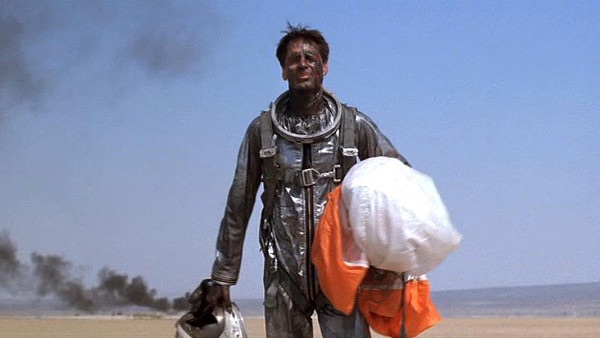
Ripsaw 031
A LIFE IN FILM #9 – STAR TREK II: THE WRATH OF KHAN
A Life in Film is a project where I’m writing about a movie from every year I’ve been alive.
1982: I Feel Young
STAR TREK II: THE WRATH OF KHAN (dir. Nicholas Meyer)
As this project itself will tell you, I was born at the end of 1974. It’s 2024 now; you can do some math (actually, doing the math will trick you, because I was born on one of the very last days of 1974, so usually it works better if you just assume ’75. Anyway. Close enough). I suffer from Crohn’s Disease in a way that, although it responds pretty well to medication, does mean that periodically my knuckles swell up and my hands in general just kind of say “I don’t feel like doing that.” RC and I took a vacation in January of 2020 and wound up taking a lot of pictures; in those pictures, I look like I could pass for late-30s. Of course, covid kicked off right after that, and if I look in a mirror and compare it to those pre-covid pics, I see a lot more gray hair, some permabags under my eyes, and generally a guy that absolutely no one would look at and think was a day younger than 49.
In other words: a lot of time these days, I feel kinda old. Not super old, mind you. But getting there (don’t worry, I’m fine). And this, of course, just makes me love Wrath of Khan even more.

Somehow, almost all of the original-cast Trek movies are in some way about grappling with middle age or beyond (I suppose this is probably just because the cast itself was aging; just looked it up and I’m currently just a touch younger than Shatner was when he made Khan, although I’m older than he was when he was worried about being old and out of touch in Star Trek: The Motion Picture).* Of all of them, Khan always did the best at grappling with the question of middle age, probably because it nests the question into a crackling story of adventure at sea that happens to be in space. Set aside the sci-fi trappings, and Khan is Hornblower in Space, executed extremely well.
Continue reading A LIFE IN FILM #9 – STAR TREK II: THE WRATH OF KHANRipsaw 030
A LIFE IN FILM #8 – THE ROAD WARRIOR
A Life in Film is a project where I’m writing about a movie from every year I’ve been alive.
1981: He’s a Reasonable Man!
THE ROAD WARRIOR (dir. George Miller)
1.
Around 1940, a kid from central Iowa named Art Pille became a baseball phenomenon. He—according to family legend, at least—was invited to try out for the Cubs, but got a Luke Skywalker-style kibosh from his father, who needed him to stick around on the hog farm and help out for another season or two. Later events would make it clear that his fire for baseball didn’t go away, but any future he might have had with the Cubs got scotched by Pearl Harbor and the United States’ subsequent entry into World War II.
Pille was drafted into the Army and trained as an aircraft mechanic for the Army Air Corps. He was posted to Australia as a small part of the massive organization Douglas MacArthur was assembling to retake the Western Pacific. Stationed in Brisbane in a logistical support role, Pille had time to meet a local girl. They got married; he stuck around for a while after demobilization and played some baseball in Australia (I still have a Sydney Truck and Tractor replica hat somewhere in my basement) before they moved back to the US and started a very large family, creating a small but fervent pocket of Australian national pride in eastern Nebraska.
2.
It’s 1983. I’m sitting in Mrs. Gardner’s 3rd grade class in Blair, Nebraska, about 25 miles north of Offutt Air Force Base, which sits on the south side of Omaha. Mrs. Gardner is, for some goddamned reason, telling a room full of third graders that Offutt is the headquarters of something called the Strategic Air Command and that, if there was a war, it would be a big target for the Soviets and everything around us would get blown up. That’s a scary thing, she acknowledges, but we should also be proud to live next to such an important place. Speaking subjectively, sitting there at my desk I feel more of the scary side of that than the proud side of that.
3.
So, with all of that established, maybe you can see why I was primed for The Road Warrior to smash into my brain as the Most Important Thing Ever when I first saw it during its run of endless screenings on HBO.* An Australian movie!!! About life after nuclear war!!! Holy shit!!! Plus, and this is important, it’s the result of one of the greatest filmmakers in history fully hitting his stride. It hit me like a ton of bricks when I saw it—stop me if you’ve heard this one—way too young, and I’ve never stopped loving it. Between The Road Warrior and INXS, the mid 80s were a great time to have a lot of Australian pride, and I don’t care how many Crocodiles Dundee you wave in my face.
Continue reading A LIFE IN FILM #8 – THE ROAD WARRIORA LIFE IN FILM #7 – THE BLUES BROTHERS
A Life in Film is a project where I’m writing about a movie from every year I’ve been alive.
1980: On a Mission from God
THE BLUES BROTHERS (dir. John Landis)
In general, I’m a little nervous about doing these writeups about movies I love, because if someone’s going to take the time to read one of these, I don’t want to waste their time with endless “OMG IT RULES!!!!” 1980 poses a tough challenge, though, because the obvious movie to talk about is The Blues Brothers, and it happens to be not just a movie that I love, but one that I love so much that I think some of its themes are implanted into the wiring of my head.
Luckily, I do think there’s some interesting bigger-picture stuff to talk about here. Theology, cultural identity, that kind of fun stuff.

There’s probably no need to do a close rehash of The Blues Brothers; if you’re reading this, I assume you’ve seen it (and if you haven’t: you should!). But there are a lot of top-level things to note about it! For instance, it’s the first (and by far best) case of a Saturday Night Live bit becoming a movie. It features John Belushi and Dan Aykroyd doing maybe the best work either of them ever did. It’s about a couple of white weirdos* who love Black music, and believe they’re on a divine mission to use the power of music to save the orphanage where they were raised. It is itself a musical!
*It’s never made clear, as far as I can tell, if we’re supposed to consider them biological brothers or if they just have a sort of spiritual/musical brotherhood; maybe that doesn’t matter, and maybe that’s another point the movie’s making, intentionally or otherwise. And, of course, a couple of white guys who are trafficking so heavily in Black-coded culture referring to themselves as “brothers” is certainly a loose thread to be tugged at endlessly.
Continue reading A LIFE IN FILM #7 – THE BLUES BROTHERSRipsaw 029
Ripsaw 028
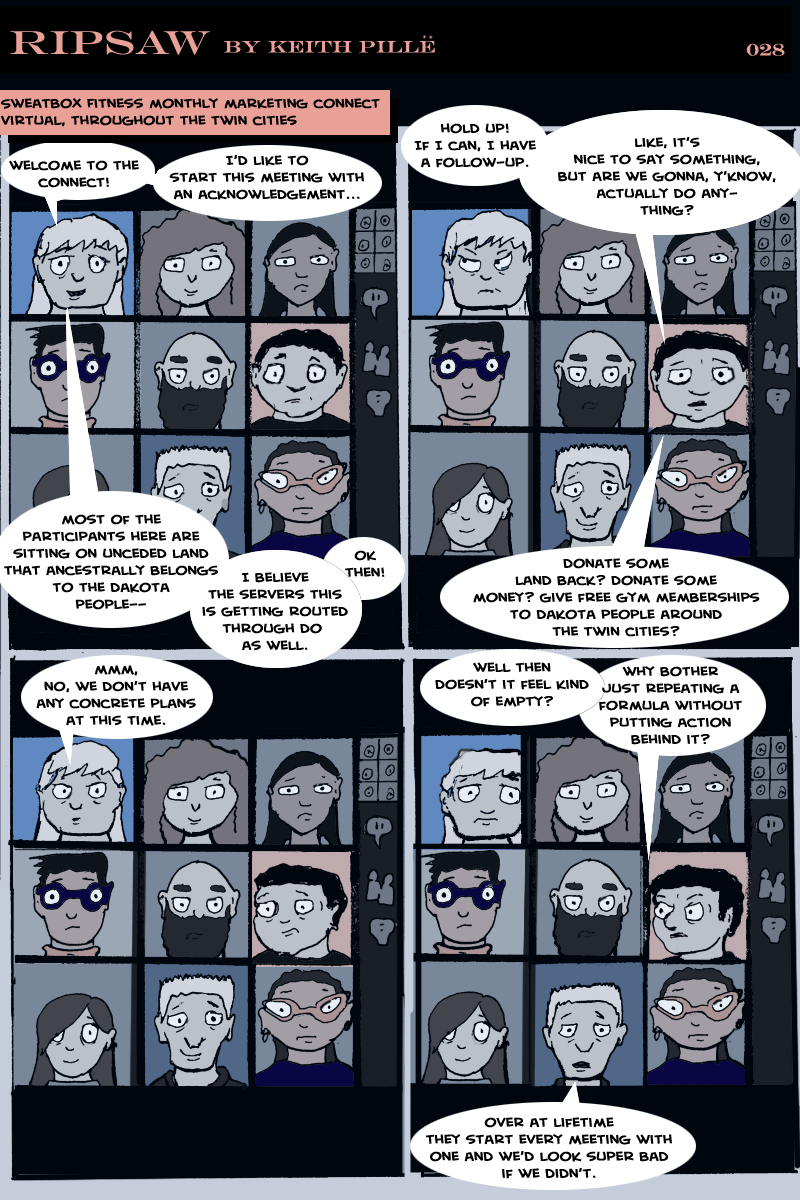
<< FIRST STRIP | < PREVIOUS | NEXT STRIP >
To be super-duper ultra-mega clear: I think it’s great when Americans of Euro descent are conscious of the history of the land they’re on, and what had to happen for things to be the way they are. I’ve seen land acknowledgements done as part of larger holistic programs , and I think that’s great when I see it. My beef is entirely with words divorced from action. I’m not calling for fewer land acknowledgments here, I’m calling for more action to go with them.
A LIFE IN FILM #6 APOCALYPSE NOW
A Life in Film is a project where I’m writing about a movie from every year I’ve been alive.
1979: A Place Where Americans Go and Stuff Happens to Them
APOCALYPSE NOW (dir. Francis Ford Coppola)
First off, and this is all I’m going to say on the matter: this movie represents the one situation where the music of the Doors is unambiguously good and awesome.
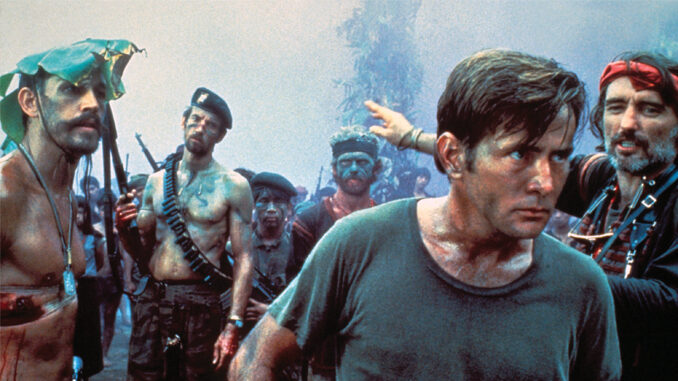
OK. With that out of the way: 1979 offered up a bumper crop of interesting, great movies! But there was always only one I was going to talk about. Apocalypse Now isn’t just a great movie, it might be the greatest American movie. It is not, however, the great Vietnam movie*; just sit with that for now, we’ll get there.
*That, obviously, is Return of the Jedi
I’m always conscious that I fully came online as a movie-watching adult with critical faculties some time in the 90s (I can peg it between the time I saw Fargo on initial release and didn’t get it at all** and when I saw it the second time, got it, and loved it). Before then, I still watched a lot of movies, of course, but for the most part they just kind of got piped into my brain un- or semi-digested. Apocalypse Now was definitely one of those. My parents had a copy as part of their enormous library of movies taped onto VHS***, and I watched it damn near constantly starting in 6th or 7th grade. I didn’t understand it at all—this is one of those movies where I was a voting adult before it really occurred to me to think about this as a movie with a plot and not just a series of cool scenes—but Young Me just *bathed* in the spectacle of this thing.
Continue reading A LIFE IN FILM #6 APOCALYPSE NOWA LIFE IN FILM #5 – NATIONAL LAMPOON’S ANIMAL HOUSE
A Life in Film is a project where I’m writing about a movie from every year I’ve been alive.
1978: You Can’t Tell Me What To Do!!!!
NATIONAL LAMPOON’S ANIMAL HOUSE (dir. John Landis)
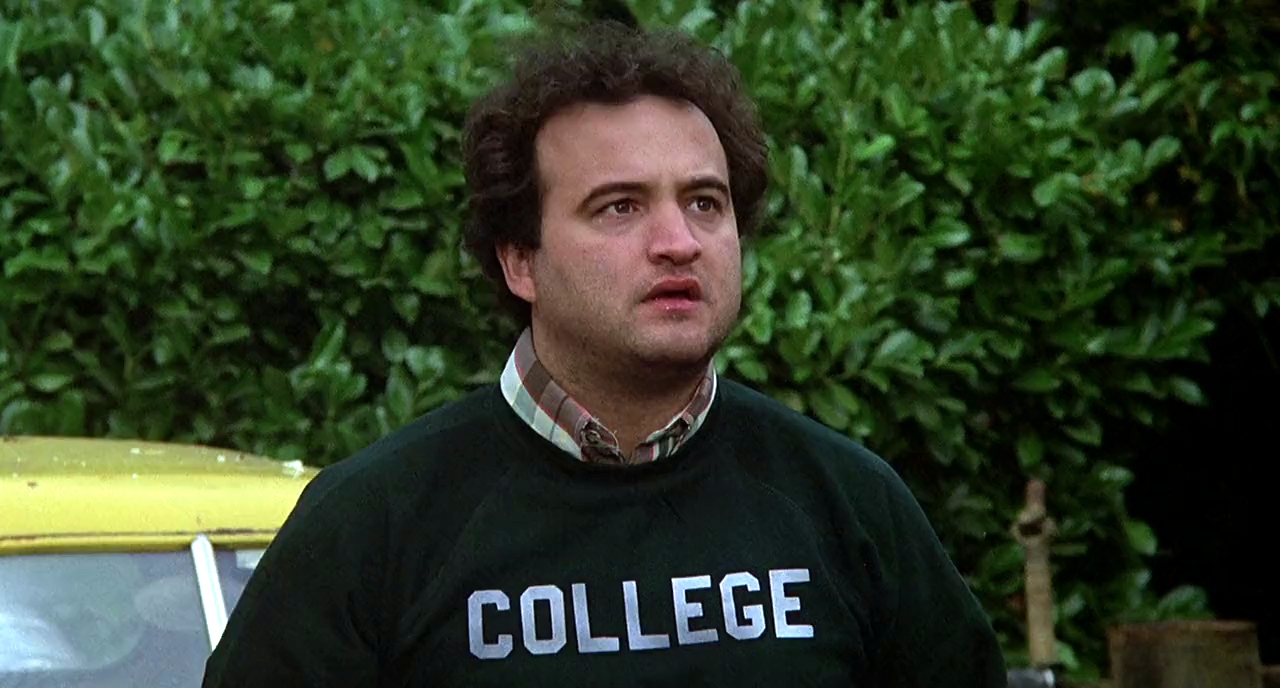
A thing people love to say when they talk about movies (usually in the wider context of complaining how society is going to hell because the PC thugs/woke police/whatever is stifling us, maaaaaan) is that “this movie just couldn’t get made today.” And the thing is, that’s usually a completely useless observation. Social mores shift and culture changes. That’s natural; it’s always happened and it’s always going to happen until nature or human nature manages to kill us all off. Sure, maybe a studio wouldn’t greenlight Animal House to be shot with this script now; but at the same time, no studio would have come within 30 miles of Bottoms in 1978.
I guess my point is that the boundaries of what’s acceptable just naturally move with time, and movies move within that space. And more than that, comedies in particular exist within the specific cultural context in which they were made.* Comedy comes from breaking social norms, either shared or otherized, and those norms move with time.** Something that’s outrageous and boundary-pushing in 1955 might be completely unremarkable by 1980.
Continue reading A LIFE IN FILM #5 – NATIONAL LAMPOON’S ANIMAL HOUSERipsaw 027

<< FIRST STRIP | < PREVIOUS | NEXT STRIP >
Quick explanatory note on this one: this is a real screenshot from the Strib on 1/1/24. I was and am pretty appalled.
A LIFE IN FILM #4 – SMOKEY AND THE BANDIT
A Life in Film is a project where I’m writing about a movie from every year I’ve been alive.
1977: YOU DON’T HAVE TO BE GREAT TO BE AWESOME
SMOKEY AND THE BANDIT (dir. Hal Needham)
Look, I’m not about to claim the Smokey and the Bandit is a great movie. It’s not. But it’s an awesome movie, and that’s nothing to sneeze at.

Admittedly, “awesome” is a pretty subjective characterization, and in this case the case for awesomeness is helped a lot if you happened to be a little kid with access to cable television in the late 1970s and early 80s. And, well, guilty as charged. Bandit’s a very visceral, kinetic movie, all cool cars doing cool things and the triumvirate of Burt Reynolds, Sally Field, and Jerry Reed* radiating charisma; you can see why kids (and the general public) loved it. It’s a sort of golden retriever, all charismatic good cheer with no gravitas and no need for any.
*My only casting beef with this movie is that I don’t think much of what Jackie Gleason does is funny, although that’s OK because he’s the antagonist and he works fine in that role. I know most people don’t agree with me on this, but on the other hand I’m not entirely alone; a friend of mine mentions that he always found Gleason actively terrifying in the role.
Continue reading A LIFE IN FILM #4 – SMOKEY AND THE BANDITRipsaw 026
Ripsaw 025
A LIFE IN FILM #3 – LOGAN’S RUN
A Life in Film is a project where I’m writing about a movie from every year I’ve been alive.
1976: WHAT CAME AFTER
Logan’s Run (dir. Michael Anderson)
Oh, Logan’s Run; a perfectly sort-of-adequate movie that accidentally serves as a very useful point of comparison to talk about another movie that came out 11 months later.
Logan’s Run is one of those—maybe the archetypal—70s science fiction movies that is basically one metaphorical idea running along on a wing and a prayer. It’s about a future utopia where the population is kept to a manageable size by killing people at their 30th birthday. That’s the kind of thing that works pretty well as a reference (“this fuckin’ bar feels like Logan’s Run!!) but doesn’t really make for all that meaty a movie. It interestingly shares with Zardoz a general theme of “ok, so you say we could have a wonderful society through technology, but what kind of sacrifices would we have to make for that, Mr. Technophile???” and then, even more than Zardoz, stumbles on the question of how to make a gripping story out of that. It’s sort of a Kilgore Trout story that managed to escape out into the real world and get made into a movie.
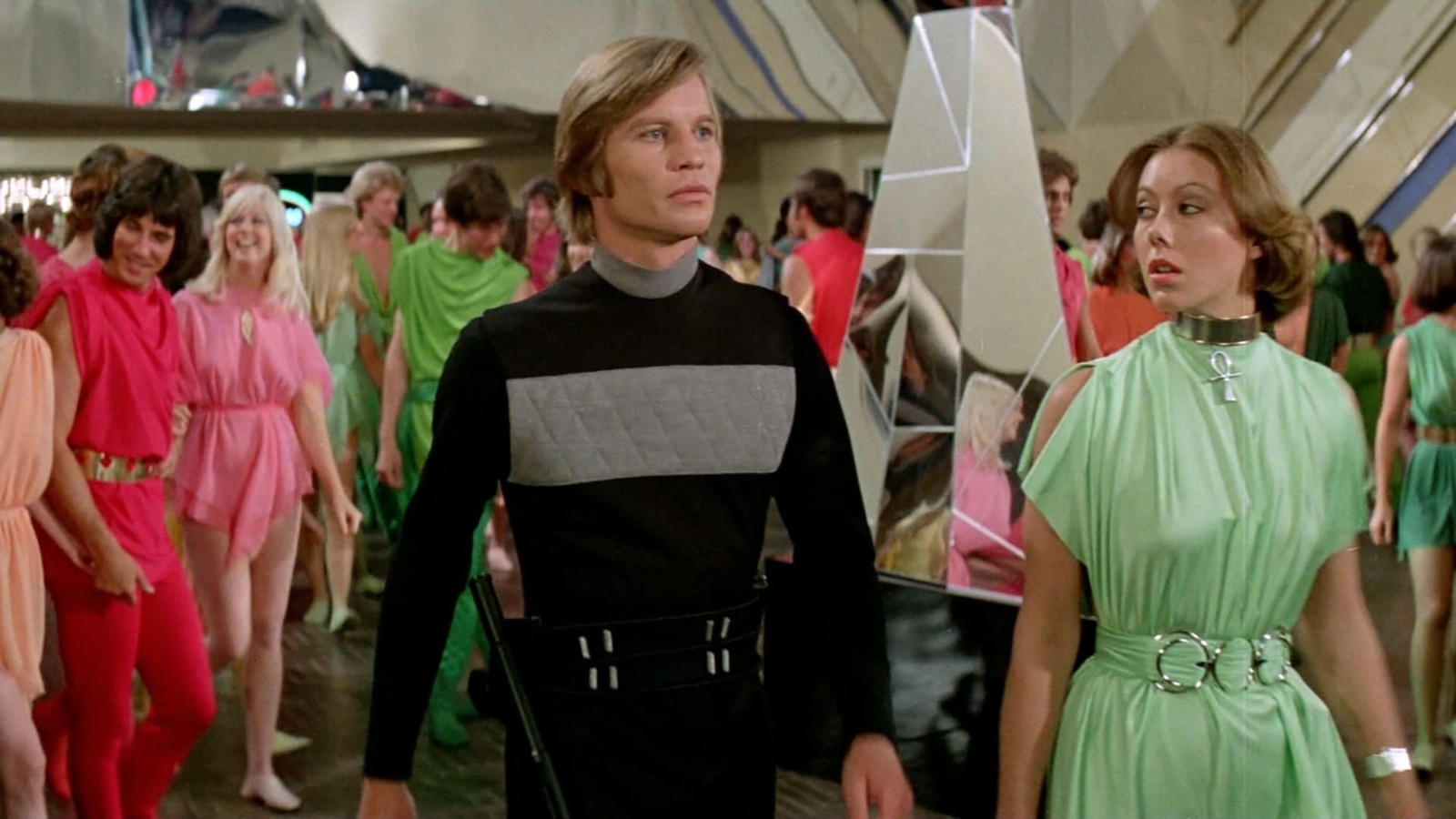
Keith Phipps notes that Logan “plays at times like the film is consciously trying to serve as the source for many future parodies of 1970s science fiction,” and that feels about right; chunks of the movie’s weird take on future hedonism even turn up in Demolition Man (and boy is that a movie I didn’t expect to keep turning up in these writeups). Big chunks of it were shot in a mall and look like it; other parts of it are so stagebound that they look like episodes of original-series Star Trek (which, to be clear: no beef for a 1960s TV show to look cheap; major beef for a 1970s feature film to look that cheap).
Continue reading A LIFE IN FILM #3 – LOGAN’S RUNRipsaw 024
A LIFE IN FILM #2: BARRY LYNDON
A Life in Film is a project where I’m writing about a movie from every year I’ve been alive.
1975: A SHITHEEL’S PROGRESS
Barry Lyndon (dir. Stanley Kubrick)
For about 25 years, Lyndon’s been the Kubrick movie that I was gonna check out some day. The double-barreled impetus of my needing a 1975 movie that wasn’t Jaws* and the death of Ryan O’Neal meant that now was finally the time. So last night I sat down and fired it up. And: holy shit was that fun!
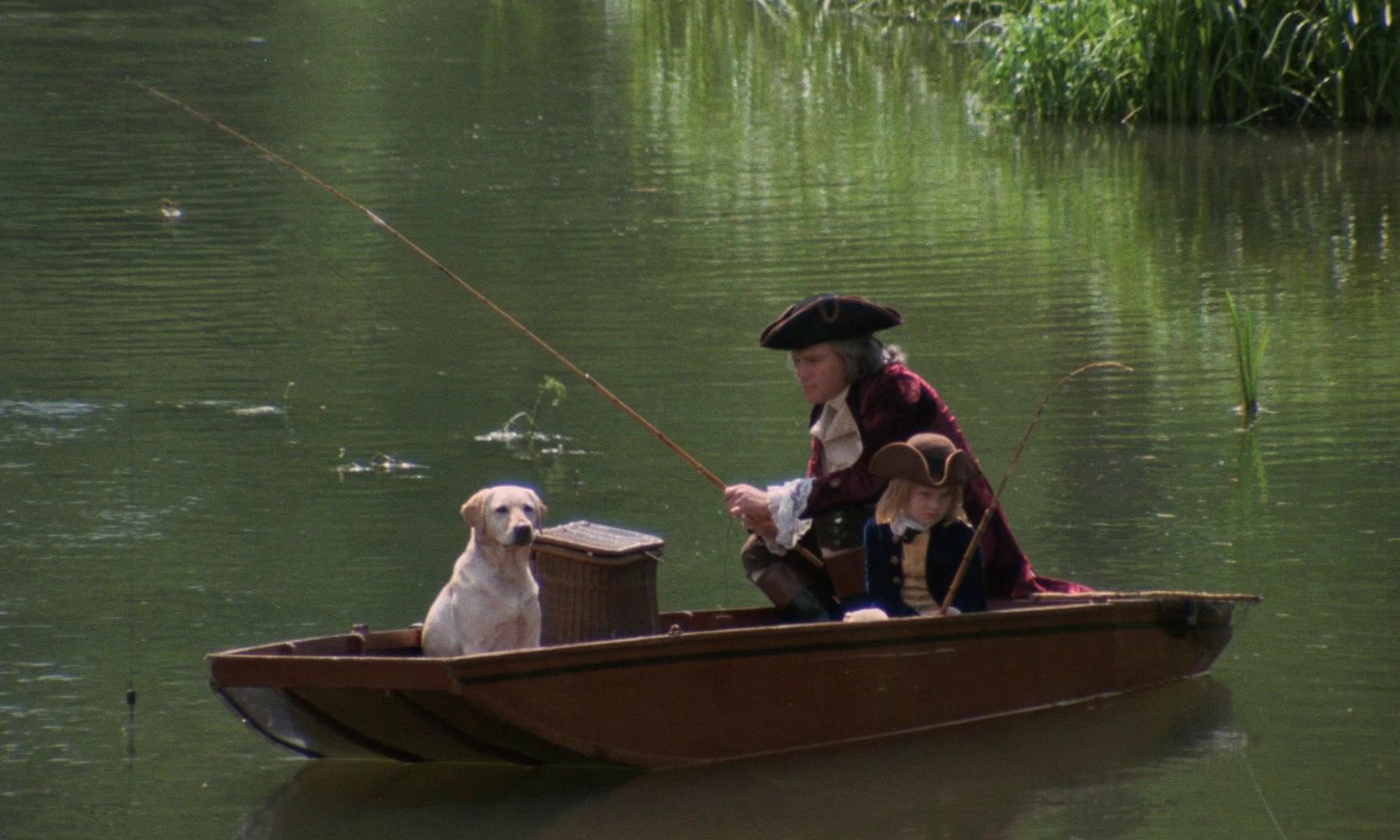
*the original plan was to use Jaws as a vehicle to talk about the business of movies, the modern blockbuster era, and the weird way that these material concerns can get left out of talking about movies, but you know what? There’s plenty of that talk out there.
I knew Lyndon was a long period piece starring Ryan O’Neal as a cad making his way through 18th century Europe; that always sounded dreadfully dull and un-Kubrickian. What I didn’t count on was that the movie would be three hours of sharp, ridiculous humor, or that O’Neal—whose screen presence I normally don’t like at all, always expecting something like this—is perfectly cast here as an empty, unlikable shitheel. I absolutely did not expect a movie whose closest thematic relatives were The Talented Mr. Ripley and Parasite.
Continue reading A LIFE IN FILM #2: BARRY LYNDONRipsaw 023
THE UNEXPECTED FINAL BUMMER OF THE IOWA CITY POLICE LOG
So, from January of 2020 to September of 2023 (with a couple of breaks), I had a project where I’d look at the twitter feed of the Iowa City Police Log, pick an entry for the day, and draw a single-panel cartoon based on it. It was a lot of fun! Of all the art projects I’ve done in my life, it was one that resonated the most with other people; Twin Cities Public Television did a piece on it, and I wound up meeting a bunch of fun and cool people online through the strip. All of the strips are still available on Instagram (twitter, too, but IG’s the better interface), and I remain proud and full of love for them.
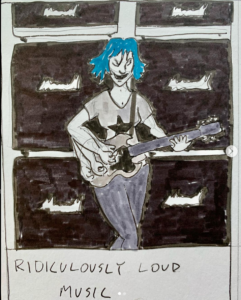

I wound it down in September of ’23 for a bunch of intertwining reasons: the strip was tightly tied to Twitter, and at that point (and I guess still) it wasn’t clear how much longer Twitter would be around, or how cool it was to be involved with it given Musk’s determination to remake the site into a right-wing oasis; I was getting worried that, after about 620 strips, I was running out of jokes and in danger of repeating myself; and, as those snowballs rolled down the mountain of my brain and started to get bigger, internal political stuff in Iowa City forced the issue when the city changed the way it reported police incidents, kneecapping the feed I depended on. So my choice was made for me. The police log strip was done after a long and full life, and it was time to move on to other projects.
Continue reading THE UNEXPECTED FINAL BUMMER OF THE IOWA CITY POLICE LOG

